

How To Visit Chaco Canyon: A Complete Guide To The Ancient Structures
Preserving the largest concentration of large-scale ancient structures in the Four Corners built by the Ancestral Puebloans, Chaco Canyon is one of the most studied archaeological sites in the U.S. Southwest. Along with Aztec Ruins and several smaller Chacoan sites, the ancient ruins in Chaco Canyon are a designated UNESCO Heritage site since 1987, recognized for their universal value.
Table of Contents
Its monumental ceremonial and public buildings feature a distinct architecture that marks Chaco as an ancient ceremonial, political, and trade center. Chaco Culture National Historical Park preserves these ruins, while allowing visitors to enjoy and learn about them.
Fortunately, as well-known as it is, Chaco’s fame doesn’t translate into being overcrowded. Yet. Although over the years I have noticed a growth in the number of visitors.
The site is one of my family’s favorites in the Southwest; we revisit the ancient structures year after year, yet I still seem to learn something new every time we go. We also see changes in the park, some we like, others not so much…
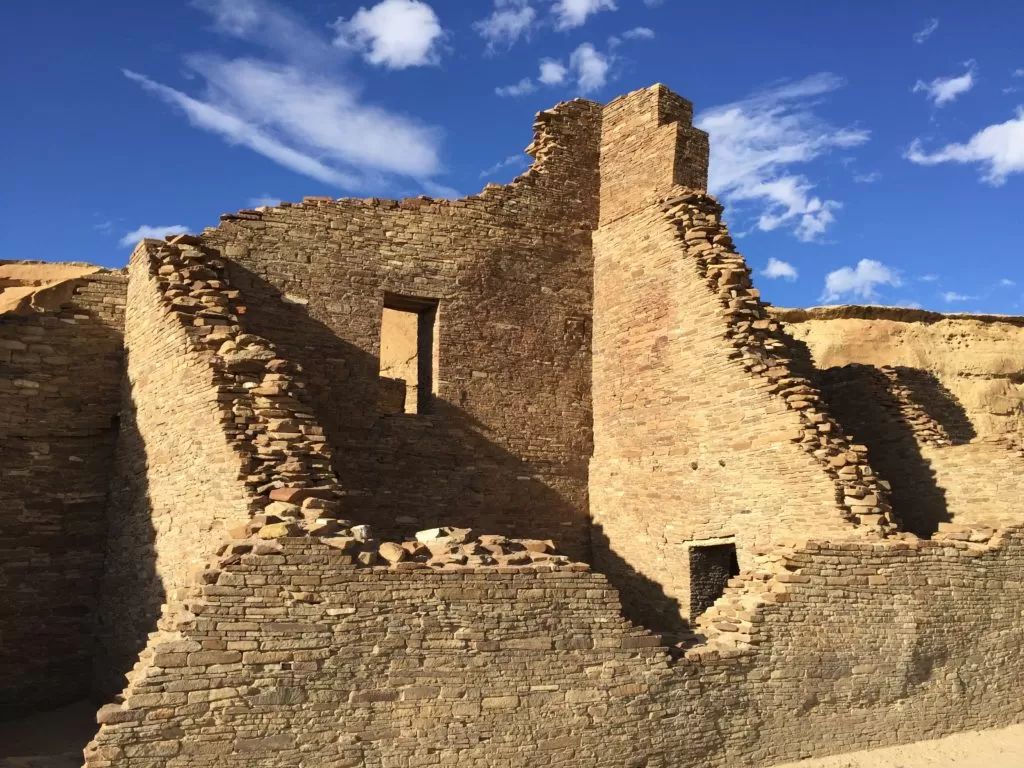
Getting To Chaco Canyon
The ruins in Chaco Canyon are still some of the least visited ones showcased in national parks. The reason for this is their remoteness. Laying in the middle of the Navajo Nation, reachable only by dirt roads, Chaco is far from any tourist route.
You need to drive about 20 miles on a dirt road to reach Chaco Culture National Historical Park from either direction. You don’t need a four-wheel drive to get through it, but a high-clearance vehicle is helpful. However, most cars can make it in good weather, as long as they can handle large potholes. I wouldn’t recommend it for low-clearance luxury cars though. They would most likely bottom out in several places.
The road from the northeast is usually in better shape, though during our latest visit a couple who drove through in a compact car told us it was almost impassable for them in some areas. The east side where we came from seemed better in comparison, though they made it in and out with their car in one piece.
We drive an SUV into Chaco most of the time, although we drove in a compact car (a VW Jetta) about twenty years ago.
So you know you have to be dedicated to see the site before setting off on this adventure.
Because visiting Chaco is always an adventure.
However, even with the dusty, often rough dirt road experience, the way to Chaco has a magical element to it. Especially at sunrise and sunset, when the desert colors are at their best.
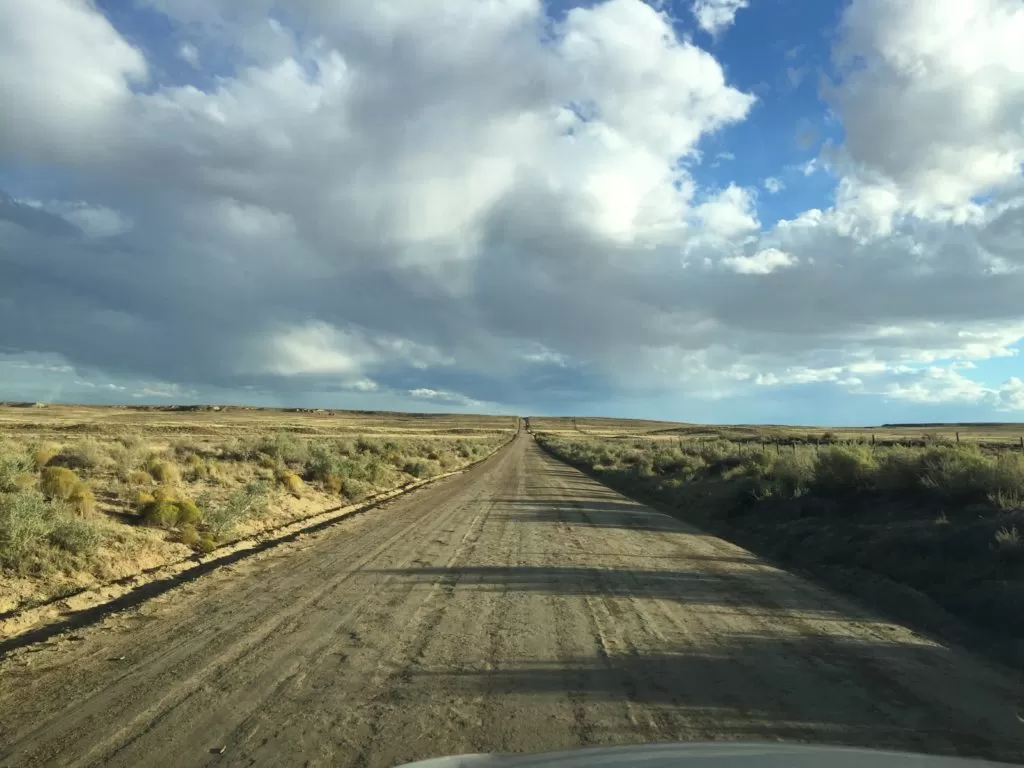
Chaco Culture National Historical Park
After the long dirt road, it always surprises me that the loop within the National Park is paved. After all, people who made it there, already drove over twenty miles on dirt. However, the smooth pavement offers a nice change.
Stop At The Visitor Center
The best way to start your visit is to stop at the Visitor Center. Chances are, by this time, you also might need a restroom break. At least I always do. The Visitor Center has traditional flush toilets, something you won’t find in the rest of the park, although you’ll find no-flush toilets in at every parking stop along the loop.
Along with traditional flush toilets, you can find water refill stations for your water bottle.
But the best part of the Visitor Center is the new museum and the film they play about the archaeological site.
The museum is missing most artifacts at this time (in September 2023). However, it still has several exhibits that explain the natural and human history of the canyon. In the center, an interactive replica of Chaco Canyon with all its major buildings offers facts about them in a highlighted question-and-answer format.
You shouldn’t leave without watching the short movie about Chaco. Told from several perspectives, including members of the Hopi nation, descendants of the people who built Chaco, the film gives you a new perspective, a deeper understanding of the archaeological site.
Rangers in the Visitor Center are happy to answer any questions and offer additional insight into the area. And, if you are there at the right time, you might meet archaeologists working at the site. You can get all the information here, including some about ranger talks and guided tours of Pueblo Bonito, the largest and best preserved structure at the site.
Una Vida, The Site Near The Visitor Center
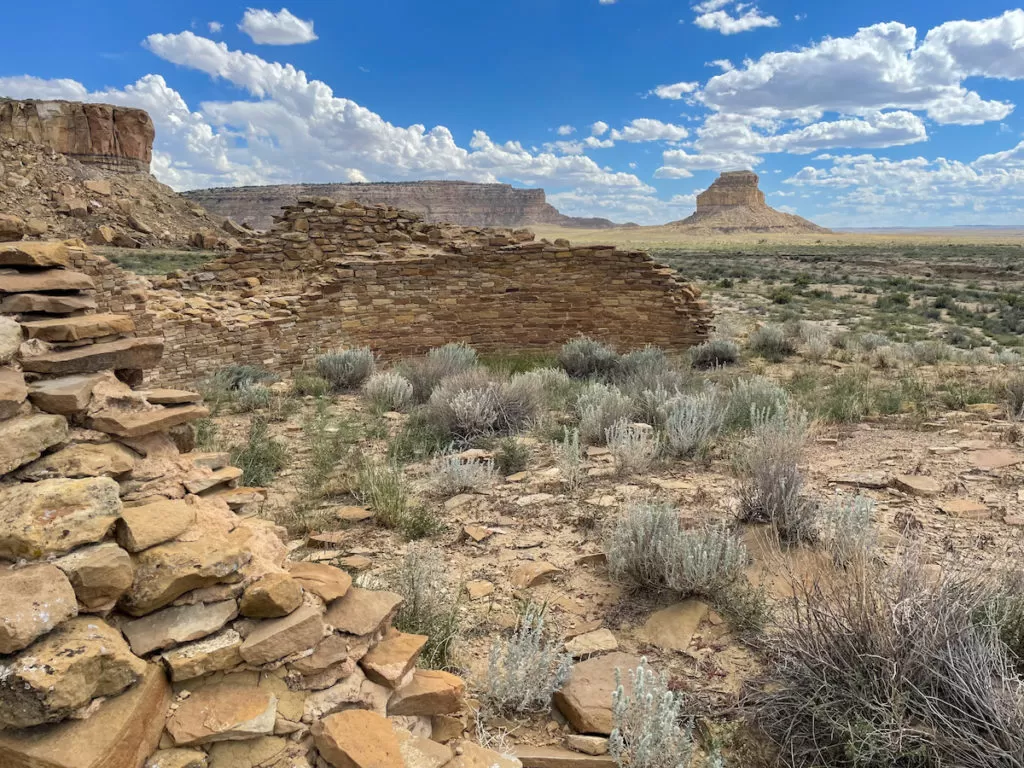
One of the Great Houses of Chaco Canyon, Una Vida, is easy to reach from the Visitor Center.
According to the interpretive sign on the trail, building this site started in 850 AD and it continued for about 250 years. It had about 100 rooms and kivas in an enclosed plaza.
However, you wouldn’t know this by looking at it, since it is only partially excavated. Centuries of dust and dirt covered the site, giving you an opportunity to see it in its natural state.
You can reach it by an easy, one-mile long round-trip trail starts near the Visitor Center. Though not much to look at as an archaeological site, it offers a gorgeous view of Bajada Butte and its surroundings.
A vertical, steep offshoot of the trail leads to several well-preserved petroglyphs.
After returning to the Visitor Center, get in your car to drive the nine-mile loop road leading to the larger sites.
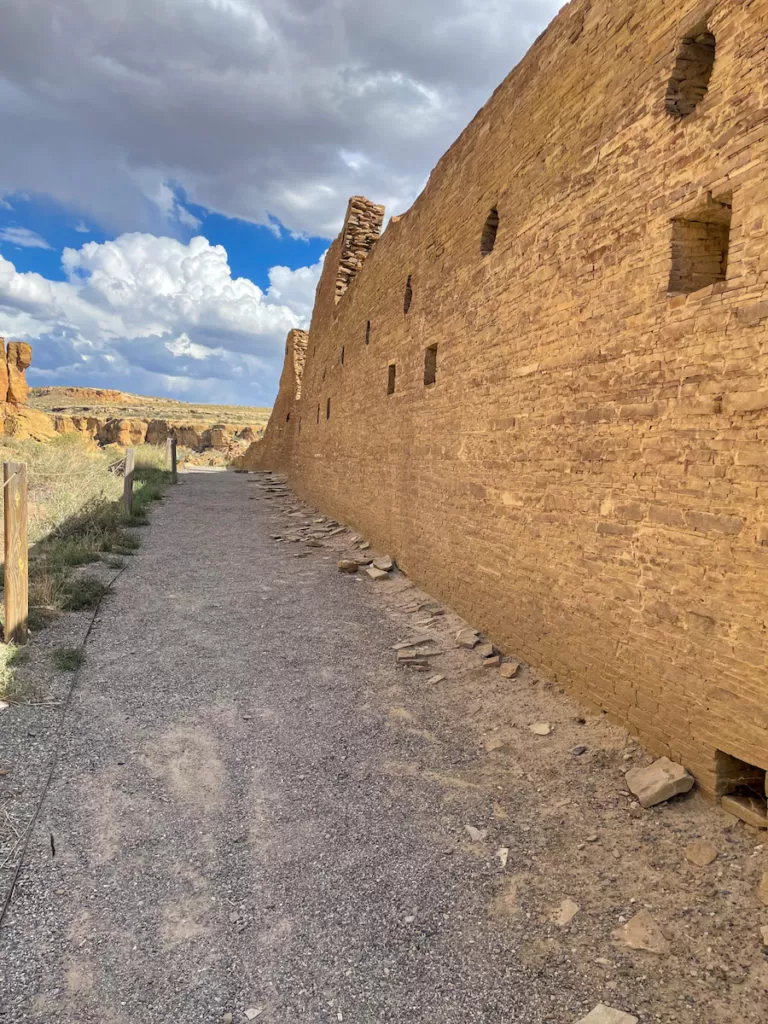
About a mile into the road, the first stop is the trailhead to Hungo Pavi. Another Chacoan Great House, occupied between AD 1000 – 1250s, it is a set of ancient buildings comprising 100 rooms, some of them four stories high, and a great kiva in an enclosed plaza.
The short trail leads through several structures and kivas, and continues behind the largest structure, offering shade from the sun.
Next Stop Along The Loop
The next parking lot offers access to both Chetro Ketl and Pueblo Bonito, two of the largest sites in Chaco Canyon. You can start with either one, but we generally opt to start with Chetro Ketl, take the Petroglyph Trail to Pueblo Bonito, and return to the parking lot from there. It is a large circle loop trail this way.
Chetro Ketl
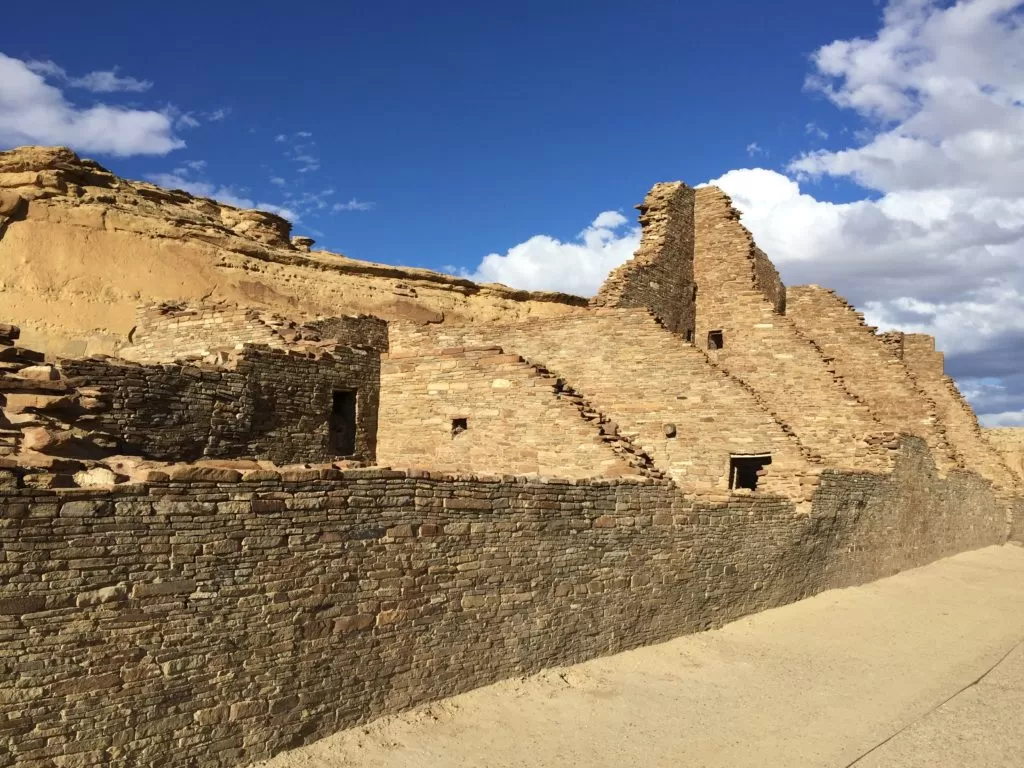
One of the largest Chacoan great house, Chetro Ketl, showcases some of the unique architectural features of the site.
It had about 400 rooms, some of them four stories high, spread over three acres. Half of it was enclosed in an enclosed plaza, lined with rooms to the north, east, and west.
The great house is a D-shaped structure, with its longest wall (on the north) running parallel to the canyon wall.
Besides all the rooms, Chetro Ketl has twenty kivas. One of them is a great kiva, a few other large ones, and one elevated, or tower kiva.
The half-mile-long trail through Chetro Ketl takes you through some of these rooms and around the great house’s perimeter.
The Petroglyph Trail
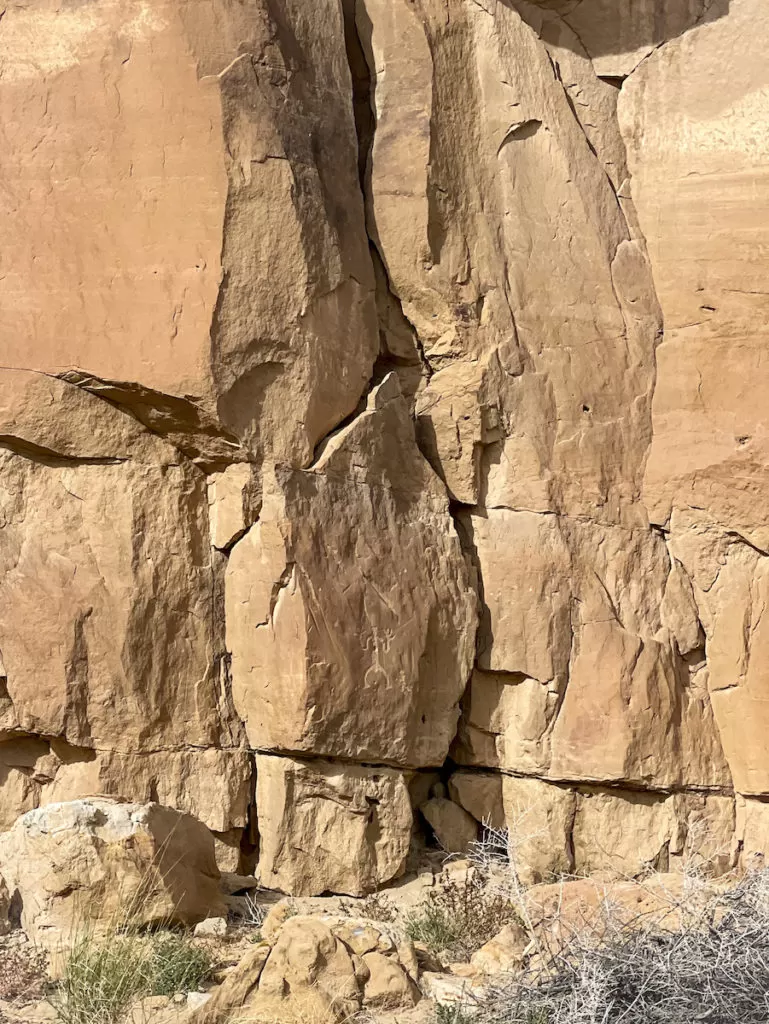
The Petroglyph Trail, running along the canyon walls, connects Chetro Ketl and Pueblo Bonito. This quarter-mile trail is always our choice of visiting the two sites.
However, you can return to the parking lot and take the other trail to Pueblo Bonito, if you prefer. A short trail to one of the better petroglyphs runs from the parking lot, if you need to return to the car in between the site visits.
You’ll find many petroglyphs all along the wall, from eroded to sharp and clear others. Over the years, I noticed the best time to see them is in the mornings or afternoons, when the sun hits them on an angle. The midday sun washes them out.
Pueblo Bonito
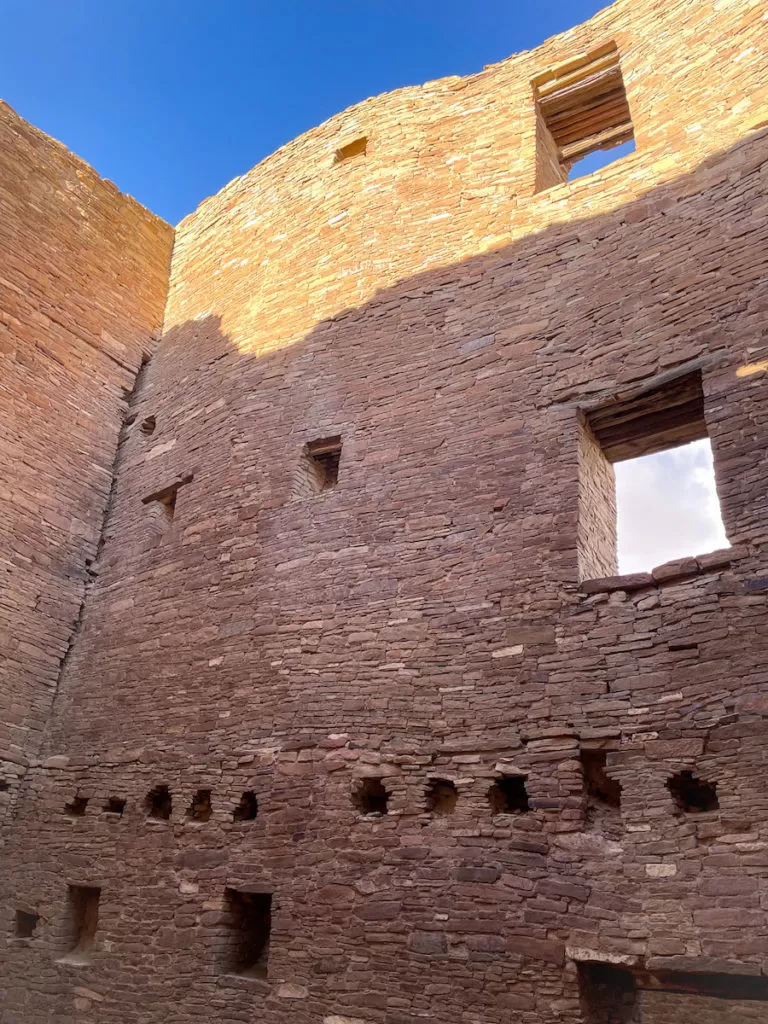
The highlight of any Chaco Canyon visit, Pueblo Bonito, is the most famous of the Chacoan great houses. Built between AD 828 and 1126, it is the most thoroughly investigated site in the canyon.
With over 650 rooms and 35 kivas, it was the center of the world for the Ancestral Pueblo people. It had many roles, including ceremonial, administrative, and astronomical center, trading, storage, hospitality, communications, and burial of the honored dead. A small portion also served as living quarters.
The famous great house is divided into two sections by a perfectly aligned north to south wall running through the central plaza. Two Great Kivas sit on the two sides of this wall, in a symmetrical pattern. Besides the Great Kivas, over thirty other kivas and ceremonial centers pepper the large central courtyard.
Besides the kivas, the highlight of your visit is most likely the multi-story structure you can walk into, explore its separate, interconnected rooms, inside and out.
Considering it is the largest site, you will most likely spend the longest time here. If you end up here during midday, the shaded rooms inside the structure offer respite from the harsh high desert sun.
The trail through Pueblo Bonito is only a quarter of a mile long, but exploring the structure adds time to the visit – and makes it a lot more fun. Doorways are low though and some are narrow, but anyone can fit through. Of course, kids will have the most fun in there, but everyone can enjoy these rooms.
You’ll also find a corner window in one room, built so the sun can shine through during the solstices.
Kin Kletso And The Sites On The Mesa Top
Though not part of the nine-mile loop, if you continue along the road without crossing the bridge over Chaco Wash, you end up in another parking lot. From here, several trails lead to the more remote sites in the park.
To hike to these sites, you need a permit or at least to sign in at the trailhead, showing how many hikers are in your party. Depending on how much time you have, and how much hiking you plan on doing, you can skip this area, and continue along the loop to the next stop, Casa Rinconada.
However, if you plan on spending a full day at Chaco, you have time to explore some ruins in this area.
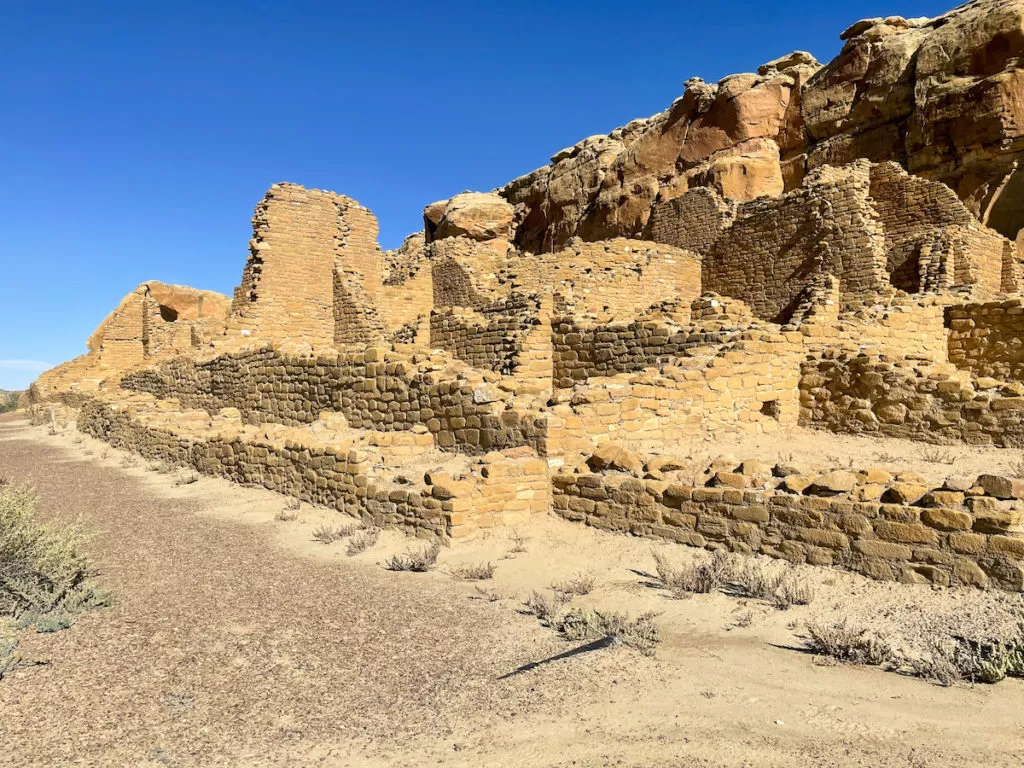
A compact, rectangular unit, Kin Kletso is smaller than the previous great houses. Built later in the Chacoan timeline, between 1120-1130, it lacks most of the features like the great kivas and enclosed plaza like the earlier great houses of Chaco.
You can walk around the building, then look for the trail leading to the mesa top – if you signed in and can do the hike.
Mesa Top Trails

To get to the mesa top, you’ll follow the trail that starts with a vertical climb through boulders and a narrow opening between the canyon walls. Though not an easy hike, it’s not impossible to do – and can be fun in some areas – especially for younger people.
At the end of this climb, you reach the mesa top that offers some of the best views of Chaco Canyon, Klin Kletso, and at the end of another half-mile trail, of Pueblo Bonito.
The hike is worth it for the views of Pueblo Bonito, but the trail leads farther up to several other sites.
Pueblo Alto and New Alto

Another Chacoan great house, built on the mesa top, Pueblo Alto housed a smaller number of people. However, archaeologists believe it hosted larger groups who traveled to Chaco for ceremonies.
Following the trail on the mesa top towards Pueblo Alto and New Alto, you’ll pass near a Chacoan road and a stairway.
The sites themselves are not as spectacular as the ones below in the canyon. The highlight of this side-trip is the actual hike up to and on the mesa top.
Pueblo del Arroyo
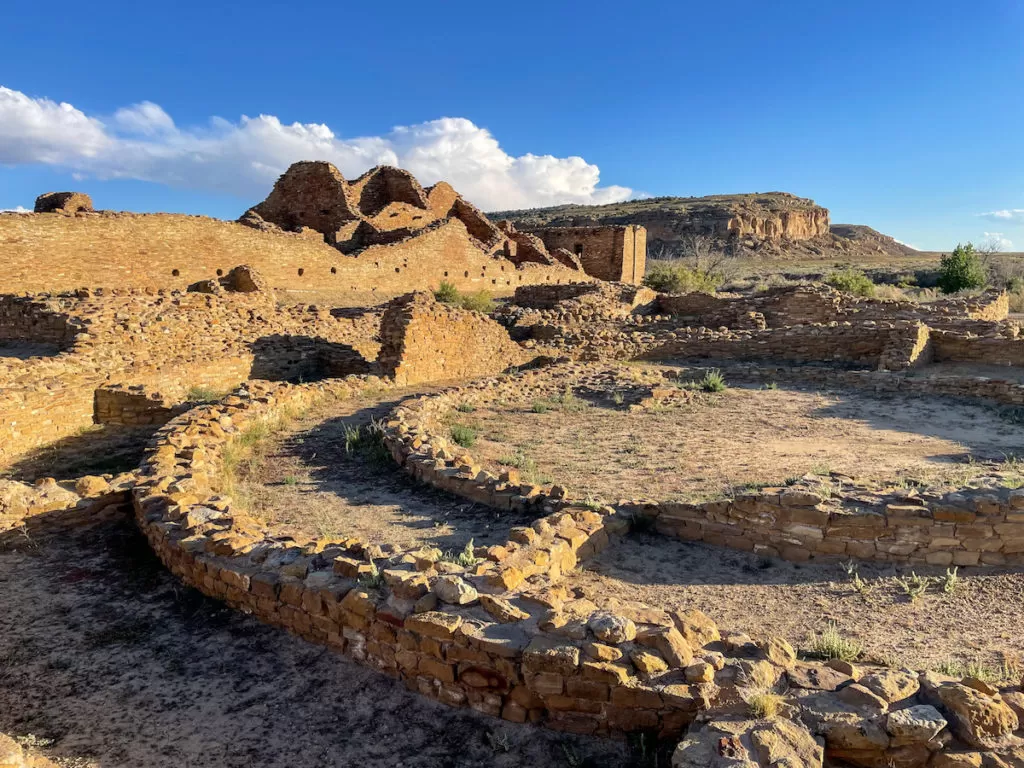
Before getting back onto the nine-mile loop trail, you can explore Pueblo del Arroyo, from the same parking lot you took the hike from.
Another Chacoan Great House, Pueblo del Arroyo, sits on the edge of the riverbed. Occupied between 1075 and 1250, it has all the features of the other great houses in the canyon: enclosed walls with kivas within, and multi-story high rooms.
However, the interesting part of this site is the arroyo, the riverbed on its edge. Though I haven’t seen water in it (yet) during any of our visits, a seasonal river still flows in it, making it greener than the surrounding area.
The trail through Pueblo del Arroyo is 1/4 mile long round-trip.
Past Pueblo del Arroyo, you make your way back on the other side of the one-way loop.
Casa Rinconada and the Largest Great Kiva in Chaco
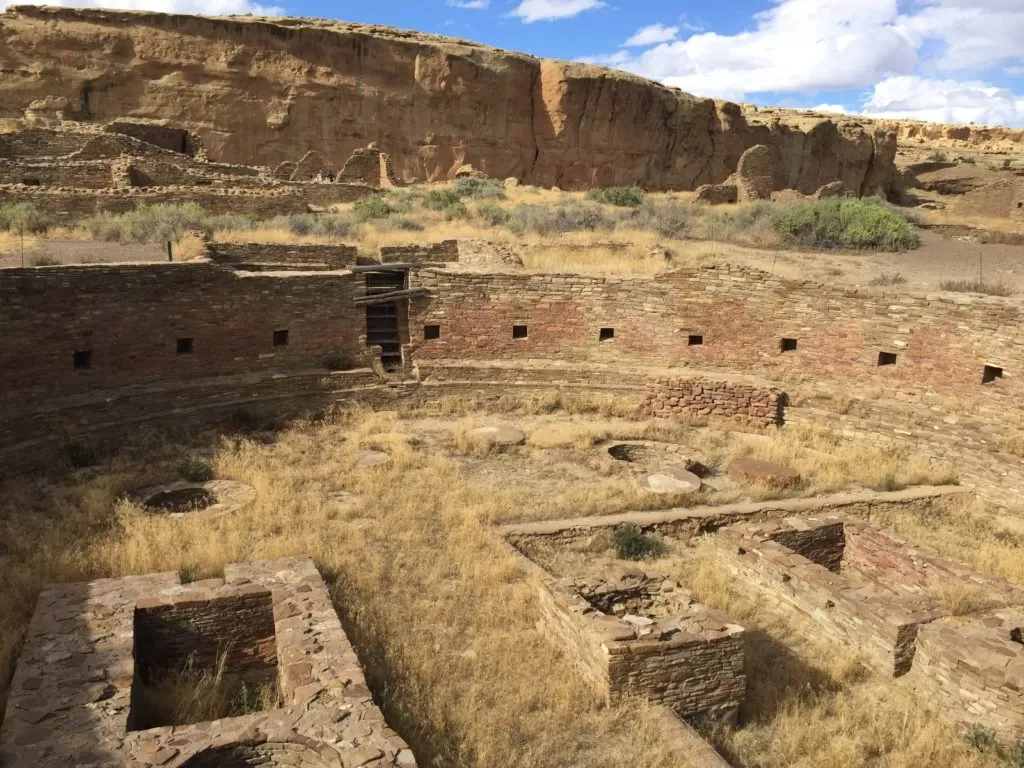
The Casa Rinconada Chacoan Great House featuring the Great Kiva is the next stop along the loop. The trail leads forks and leads to either the house structure or the Great Kiva. The largest kiva in Chaco Canyon, the Great Kiva, has a diameter of 64 feet.
A kiva is a large, circular structure, used by the Pueblo people for ceremonies and political gatherings. Great kivas differ from ordinary kivas not only by size – they are generally much larger – but also by several distinctive floor features. They have “foot drums” and artifacts like large serving bowls that reflect communal feasting. (definition from Crow Canyon Archaeological Center’s website ).
After walking to the Great Kiva, you can take the connecting trail to the Casa Rinconada great house. Or just enjoy it from afar, especially if you are there at sunset.
Learn About The People Of Chaco Canyon
Since you are exploring the structures they built so long ago, it is natural to learn about the people who once lived in Chaco Canyon.
Although, I’m sure if you make the trip, you know about them – and the site – beforehand, and it’s the reason you are there. But if not, the best way to learn about the people who built these structures and lived here for an extended period is at the Visitor Center.
The Museum offers a great overview of the landscape and its people. But I found the short film they play answers even more questions, since it looks at the history of Chaco not only from an archaeological perspective, but from the perspective of the descendants of those who built it.
The Chacoans didn’t “mysteriously disappear”
For many years, archaeologists were guessing why the people of Chaco left the city they built. Yes, a long drought and depletion of resources influenced their timing. But they never intended to stay there forever.
It wasn’t until archaeologists and anthropologists started working with the descendants of the people of Chaco that a clearer picture emerged.
According to the Hopi, one of their descendant nations, Chaco was only a stop on their migration to the center they were seeking.
I loved the analogy of the clouds they used. One of them said that people are meant to move like the clouds. Clouds never stay too long in one place, and it is the same with the people.
Sometimes, if they find the right place, they may build cities and stay for longer, even a few centuries, like the huge thunderclouds that can linger above a landscape for a while. But eventually they move on.
That’s what happened to the Chacoans, they say. It was time for them to move on. Different clans went in different directions, and those who became the Hopi, moved onto the Hopi mesas.
Still, Chaco is a sacred land for them all. It’s part of their history. But they don’t mind sharing it with the rest of the world. After all, places should be experienced by anyone who walks through. However, we, all visitors, need to respect their history, should treat the site as sacred.
The National Park System acknowledges this, and the latest signs reflect it. All the trailheads have signs designating them as Sacred Sites, asking visitors to treat them with respect.
Who Were the Chacoans?
Archaeologists used to call people who lived here the Chacoan Anasazi. The name originated from Navajo, meaning “the ancient ones”.
The Navajo, whose tribal land surrounds Chaco, migrated into the area long after Chaco was abandoned. Since they didn’t know who built the structures, they called them “the ancient ones”, Anasazi, a name archaeologists adopted.
Eventually, they found out that the ancient people of Chaco were the ancestors of the present-day Pueblo people . To reflect this, and honor the relationship, the name we use for the people who built the ancient structures in Chaco Canyon is Ancestral Puebloans .
How ancient people built a civilization in Chaco
Chaco Canyon was a good place to settle in ancient times. In the middle of a high desert where not much grows, Chaco Wash offered enough water for the survival of large groups.
The first evidence of people living here dates back 4000 years, although they built nothing lasting until 400-500 AD. That’s when the first pit houses originate from. Around the end of this period, they also built more centralized structures.
However, it was the 9th when the area went through the biggest growth and transformation. This is when they started building the Great Houses, the remains of which we see today. They are such a distinctive feature of Chaco Canyon, archaeologists call it the Chacoan Phenomenon.
They continued the tradition of building these Great Houses for the next 250 years. During this time, they also built dams, canals, and a road system. They established trade routes with other cultures from the Southwest and Mesoamerica.
They built outlier communities, like Aztec , and even farther, Chimney Rock , among others. People from these outlier communities came to Chaco for special events and ceremonies, establishing the site as a cultural, political, and ceremonial center.
But this only lasted til around 1150, when Chaco started losing its importance as a center, and eventually its people left.
Where Did The Chacoans Go?
Different clans from Chaco moved in different directions.
In the Museum of the Visitor Center you’ll find an exhibit of Chaco’s name and its meaning for all the modern Pueblo nations, and several Navajo clans, that trace their lineage back to Chaco. If you count, you’ll find 26 of them. They live throughout the Four Corners, in the regions surrounding Chaco in all directions.
In the stories of most of these nations, Chaco was an important stop along their migration. These are the stories of the Hopi, Zuni, Acoma, Tewa, Laguna. For others, it is simply the place of their ancestors.
Some of these nations, specifically the Hopi that I know of, still hold pilgrimages to Chaco to continue their connection with their ancestors.
Honoring these histories should be part of each visitor’s journey through Chaco. We might enjoy the ancient structures, but it is the history behind it that gives them meaning. Adding an understanding of the history their descendants tell makes our experience richer.
Dark Skies In Chaco
Chaco Culture National Historical Park is an International Dark Sky Park , with its own observatory, built in 1998. The park offers night sky programs from April through October, that start with staff presentations on archaeoastronomy, cultural history, and other topics, followed by telescope viewing of celestial objects.
If you really want to enjoy the night sky in Chaco, you can camp at the site – in the summer months.
Practical Tips For Visiting Chaco
Where to stay.
Besides camping, you won’t find other lodging in the park. The closest towns are at least an hour away, so you need to plan accordingly.
You’ll find a selection of hotels in Aztec (69 miles away), Farmington (74 miles away), or Gallup (94 miles away).
Though it is the farthest, we often use Gallup as a starting point – at least when we visit Chaco on a weekend. Gallup also seems to have the largest selection of hotels for all budgets. We also found that highway driving for part of the way makes up the distance.
Bring your own food
No matter where you spend the night, you need to bring your own food when visiting Chaco. The park has no restaurant or grocery store, so make sure you have enough food. The visitor center has a store, but you’ll only find snacks there. You can fill up your water bottle at the refill station in the Visitor Center, but bring enough to get there.
Hiking in Chaco
Remember that you are in the high desert, where the sun can be extremely strong, especially in the summer. You will also find little shade at the structures, and none on the trails, so plan accordingly. While exploring any of the ruins, make sure you carry water and wear a hat and sunscreen.
Wear comfortable shoes, no matter how long you plan on hiking.
For best views and pleasant temperatures, consider staying until sunset, even if you have a long drive back.
If it’s your first time here, consider joining a guided tour, offered from May to October. Check the park’s website for times and availability.
FAQ – Facts about Chaco Ruins In a Nutshell
What is chaco canyon known for.
Chaco Canyon is known for its extensive ancient ruins, especially its Great Houses, unique to the region that originated here. The ancient city in Chaco Canyon was once the most important cultural, religious, and political center of the Four Corners area of the US Southwest.
What are the Chaco Ruins?
The Chaco ruins comprise the largest concentration of ancient Pueblo sites in Chaco Canyon, best-known for their “great houses”. These Great Houses comprise large multi-story structures and include several kivas. The largest and most famous of them is Pueblo Bonito.
What is Chaco Culture National Park?
A World Heritage Site, Chaco Culture National Park is a US National Park protecting Chaco Ruins, the largest concentration of ancient pueblos in the American Southwest.
What does Chaco mean?
According to the National Park Service site, Chaco is derived from the Spanish colonial word “Chaca”, meaning a large expanse of open and unexplored land. The name was first used by Spanish cartographer Bernardo de Miera y Pacheco on a map he drew of the area in 1778. Other explanations they cite have to do with misunderstood or mispronounced the place name the Acoma used for Chaco. The Acoma name for the area is W’aasrba shak’a, meaning “place of greasewood”, which might have been shortened and mispronounced as chaca. The Hopi name for Chaco is Yupkoyvi, meaning “the village beyond the horizon.”
Why are the ancient ruins of Chaco Canyon important?
The Chaco ruins are the remains of an important cultural, religious, political, and astronomical center in the Southwest. Many of the buildings are aligned to showcase solar and lunar cycles and astronomical events. Besides this, a large concentration of ceremonial kivas proves the site’s cultural and religious importance.
Who were the ancient people that lived in Chaco Canyon?
Called Ancestral Puebloans, the people who lived in Chaco Canyon and built the structures we see there were the ancestors of the present-day Pueblo nations and several others.
When did the Ancestral Puebloans live in Chaco?
Though they lived in the area earlier, the timeframe known for the Ancestral Puebloans living in Chaco was between 900 and 1150. This was the time Chaco was the most important cultural, political, and religious center in the Four Corners.
Where is Chaco Culture National Park?
The ancient ruins of Chaco and Chaco Culture National Park are in the Navajo Nation, in the state of New Mexico, in the Four Corners region of the US Southwest.
What are the closest towns to Chaco?
The closest towns to Chaco are Farmington (72 miles away) and Gallup (92 miles).
How to get to Chaco Culture National Park?
You can only reach Chaco Culture National Park through dirt roads, from two different directions. You’ll drive 20 miles on a dirt road, most of it passable even by car in good weather. It always helps to drive a high-clearance vehicle, though.
Where to stay when visiting Chaco Canyon?
The best way to experience Chaco Canyon is by camping in the National Park; the campground offers sites in the shadow of a cave dwelling. Besides staying in the proximity to the ruins, camping in the park offers the best views of the night sky, since Chaco is a Dark Sky Park. It also has a small observatory near the Visitor Center that might open during some nights. If you are not a camper, you can find hotels for every budget either in Farmington (72 miles away) or Gallup (91 miles).
Bibliography:
Besides learning about the ruins of Chaco in the park, during many trips to the site, my knowledge is also based on my readings over the years. The following are only a few of them:
- Pueblo Bonito, Center of the Chacoan World, Edited by Neitzel, Jill E., Smithsonian Institute, 2003
- Chaco. A Cultural Legacy. Chaco Culture National Historical Park, Strutin, Michal, Western National Parks Association, Tucson, Arizona, 1994.
- Lister, Robert H and Florence C, Chaco Canyon. University of New Mexico Press, Albuquerque, 1981; Fifth printing: 1997
Though some of the information might be outdated in the older editions, you can find newer editions of the same, reflecting more recent studies. Though I don’t own the newer editions, I have read most of the additions to them.
About Chaco’s outlier sites:
Aztec Ruins
Chimney Rock
Edge of the Cedars
Escalante Pueblo in Canyons of the Ancients
and other Ancient Ruins in the Four Corners area
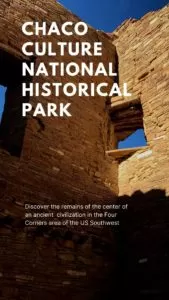
Related Posts
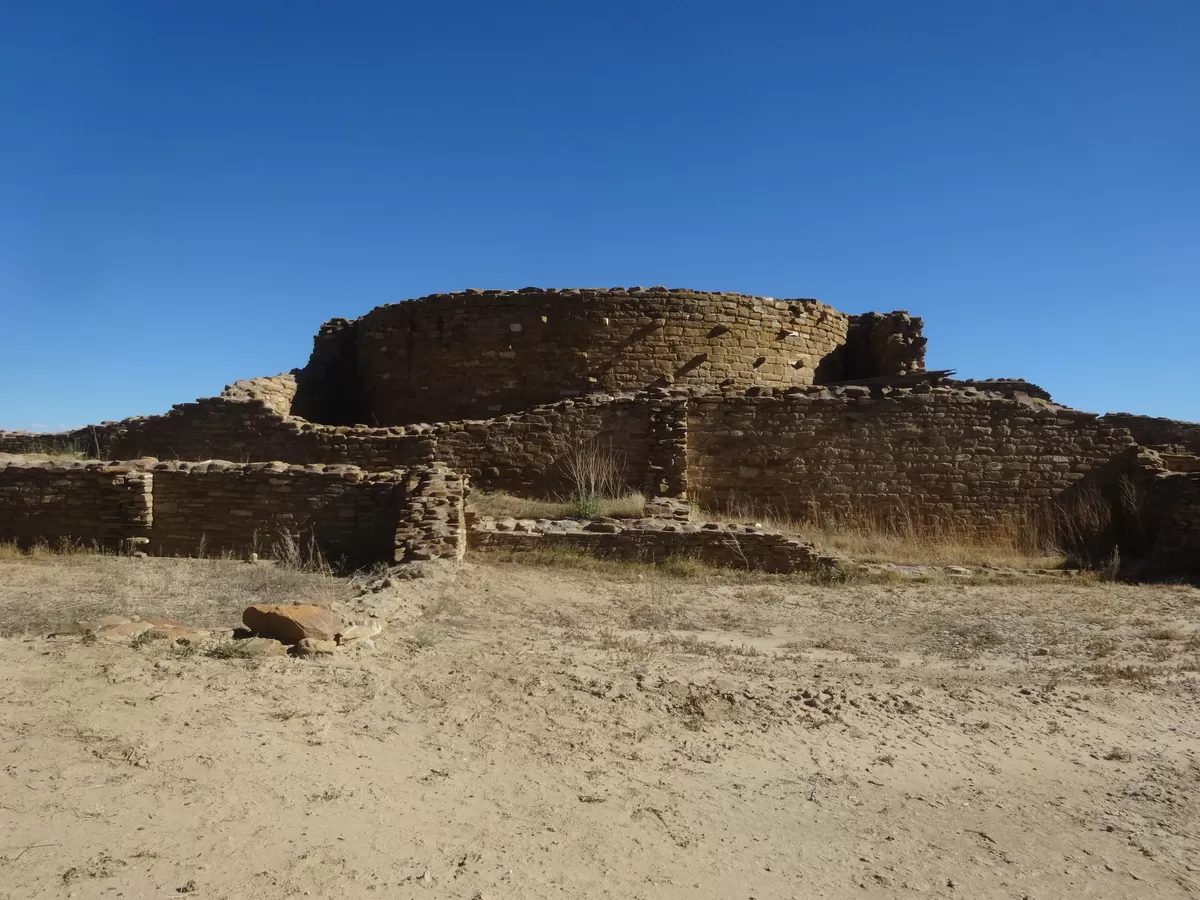
In The Footsteps Of The Ancient Puebloans In Chaco Canyon
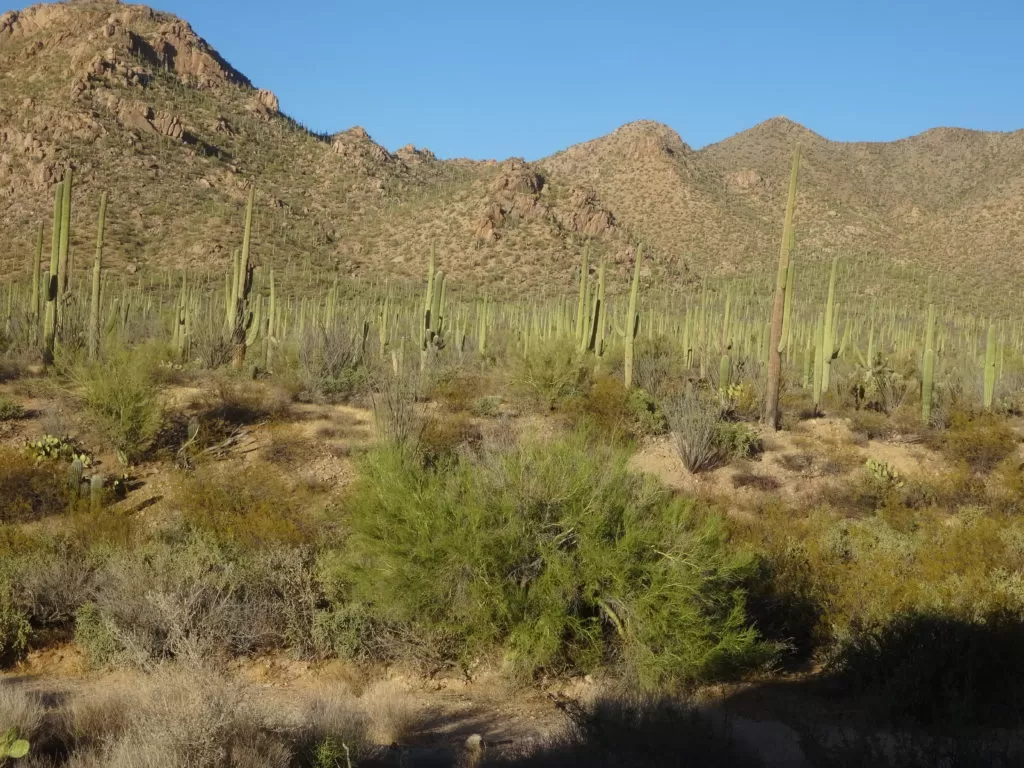
Saguaro National Park Showcases The Symbol Of The Southwest
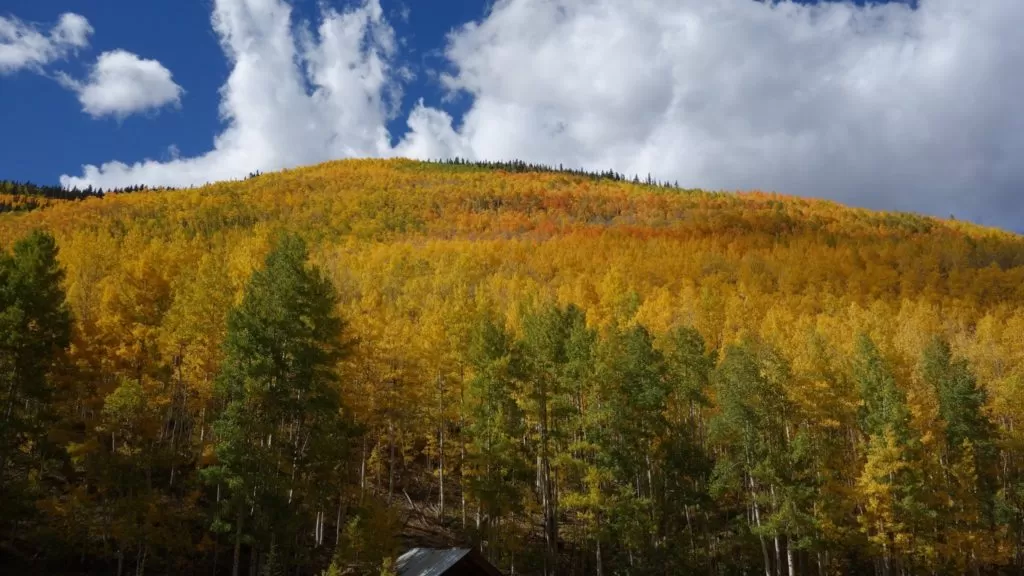
Autumn Colors on the Million Dollar Highway
Leave a comment cancel reply.
Your email address will not be published. Required fields are marked *
This site uses Akismet to reduce spam. Learn how your comment data is processed .

Daytrippen.com
Your Trip Starts Here
Chaco Canyon Historical Park New Mexico Day Trip
by DayTrippen
- Odnoklassniki icon Odnoklassniki
- Facebook Messenger
- LiveJournal
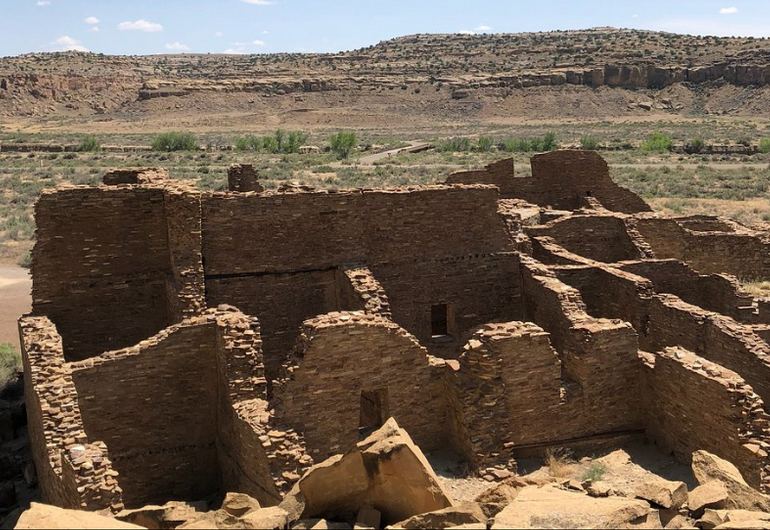
There are so many reasons to visit Chaco Canyon in New Mexico. This area of New Mexico is home to a fantastic network of pueblo ruins built by ancient Anasazi people that date back to AD 850. Chaco Canyon contains the most extensive collection of Puebloan ruins in North America. A trip here is perfect for both history enthusiasts and outdoor buffs.
The Chaco Culture National Historical Park (NHP) is the perfect getaway to explore the distinctive architecture, ruins, and ancient roads of this significant center of Puebloan culture. Explore the park through the day or enjoy a night in the canyon, camping, and stargazing. The choice is yours!
Things to do in Chaco Canyon

Ranger tours at Chaco Canyon
The best way to explore the canyon is with a knowledgeable guide. The Chaco Canyon NHP ranger-led tours offer fantastic insights into Chacoan history and life, along with their interest in astronomy. The major runs within the Chaco Canyon can be explored through these tours. It’s a great way to understand the history of the ancient Puebloans.
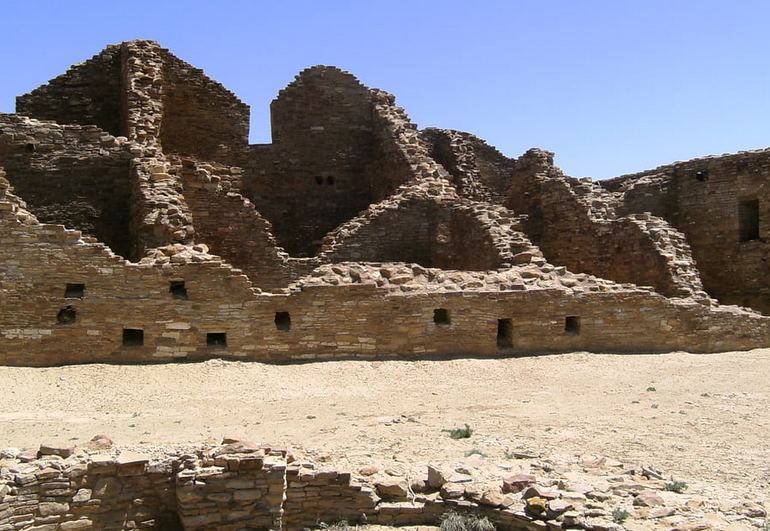
Self-guided tours
If you want to go solo, that’s a great option too. There is a 9-mile paved loop around the most well-preserved great houses, with options for parking near each site. Signs provide information as you walk in and around the ruins. Due to Chaco Canyons, remote location, chances are you will have the place to yourself, especially if you visit during the week.
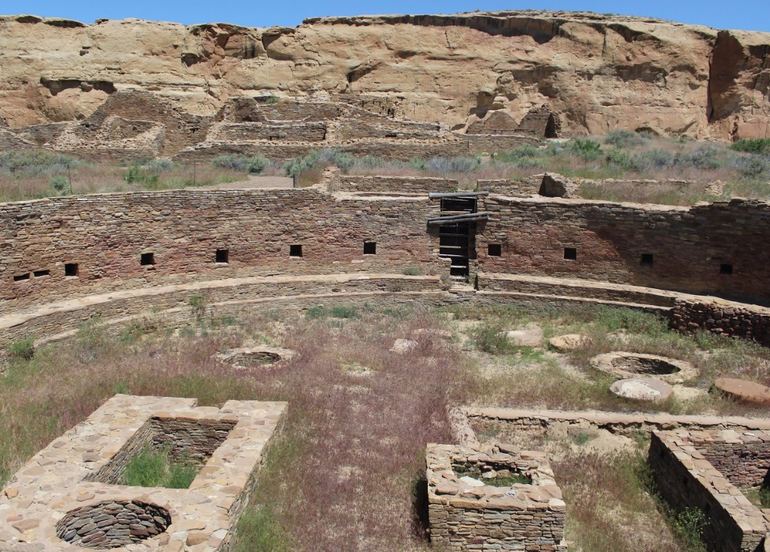
Hiking in Chaco Canyon
Chaco Canyon offers some great hiking trails for outdoor enthusiasts. The most common trails within the park are Wijiji Trail, South Mesa Trail, Penasco Blanco Trail, and the Pueblo Alto Trail, ranging from three to eight miles. Get hold of a trail guide booklet at the Visitor Center before you start your hike, and irrespective of the trail you choose, your walk will give you a chance to experience a unique landscape amid ruins unlike anywhere else in the world.

Biking in the Canyon
Opt for bicycling around the sites if you want to cover more ground. The 9-mile paved loop drive is a great way to begin. Each leading site has parking options, and a few places you can hide are the Hungo Pavi, Pueblo del Arroyo, Casa Rinconada, Pueblo Bonito, and Cheto Ketl.
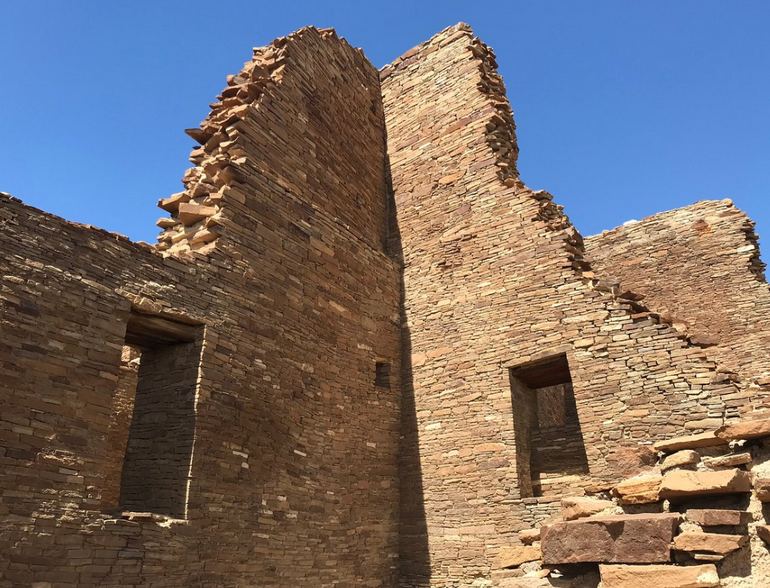
Night Sky Programs at Chaco Canyon
Go up a notch with this one, and sign up for a Night Sky Program at the park. Available on weekends and at special celestial events throughout the year, the program offers presentations on archaeoastronomy, cultural history, and the viewing of heavenly bodies through telescopes. If you are mesmerized by night skies, you’re already at the best place in the USA to stargaze!
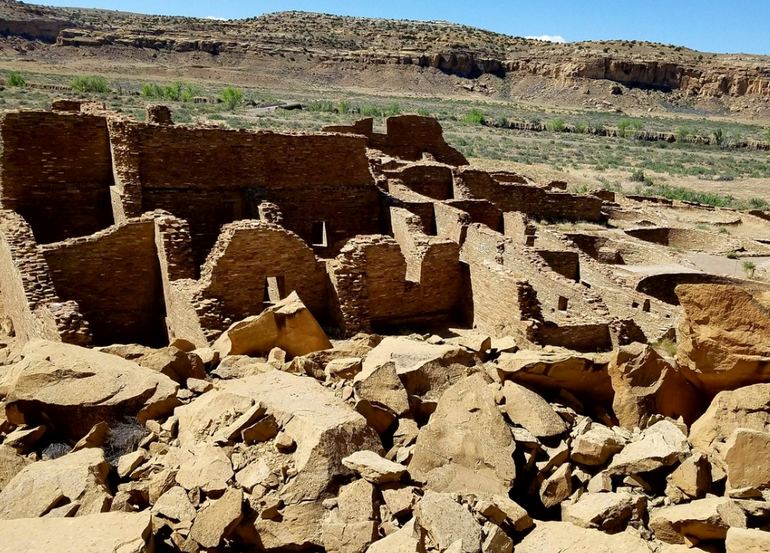
Camping Chaco Canyon
While it is possible to visit the Canyon on a day trip, camping is a fun option. The park offers camping facilities at the Gallo Campground, with 48 individual campsites. Located near a small cave ruin, there are no shaded areas, so come prepared. The campsites offer picnic tables and fire grates. Come well-equipped. There would be no stores in the canyon, and it’s a long drive if you forget to pack an item.

Getting There
Location: northwestern New Mexico. Chaco Canyon can only be visited by driving on dirt roads. The best route is from the North via US 550. The turnoff is 3 miles southeast of Nageezi. This route is signed from US 550 to the park boundary (21 miles). The course includes 8 miles of paved road and 13 miles of rough dirt road. Park Website .
New Mexico Day Trip Ideas
Carlsbad caverns, aztec ruins national park, fun things to do.
- 25 Free Things to Do In Southern California
- Southern California Bucket List
- California Natural Hot Springs
- California & Nevada Ghost Towns
- Unusual Things to Do in Southern California
Browse By Topic
- Southern California Whale Watching
- Southern California Historic Places
- Senior Friendly Day Trip Ideas
- Southern California Museums
- Southern California Beach Destinations
Browse By Interest
- Western States Day Trips
- Best Hiking Trails Southern California
- Los Angeles Kids Birthday Party Places
- California Zoos & Aquariiums
- California North Coast Day Trips
- Wineries & Wine Tasting

Chaco Canyon: The Ultimate Guide
Situated in a remote corner of northwest New Mexico are what were once the United States’ largest manmade structures. Established by the Ancestral Puebloans over a millennium ago, Chaco Canyon (officially known as Chaco Culture National Historical Park) is arguably the most impressive archaeological park in the country. But planning a visit can be tricky, which is where this Chaco Canyon guide comes in.
In the following guide, we’ll be covering all the main sites (and hikes) one can expect to experience within a single full day. And at the very end of the article , you can learn more about reaching Chaco Canyon and the best places to stay.
Chaco Canyon: A Brief History
Visiting tips, fajada butte, pueblo bonito, chetro ketl, pueblo del arroyo, the pueblo alto trail, casa rinconada.
- Accommodation & Transport Info
Despite its remote location and harsh conditions, Chaco Canyon was continuously occupied for at least 4000 years, as evidenced by numerous pit house settlements. But the impressive structures we see today were established by the Ancestral Puebloans who came to the area in the 9th century.
The Ancestral Puebloans are also known as the Anasazi. But as this is actually a Navajo term which roughly translates to ‘ancient enemies,’ their modern descendants aren’t a big fan of the label.
With construction beginning in the 850s, the Ancestral Puebloans seemed to have deliberately planned out their settlements in advance before continuously working on them for the next few centuries. These large complexes are known as ‘great houses,’ and many of them featured hundreds of rooms.
Not only were the designs of the individual great houses carefully planned, but their positions in relation to one another appear to have been deliberate as well, with astronomy having a major influence over the area’s layout.
During its prime, Chaco Canyon was likely inhabited by a combined total of a few thousand people. We still know little about Chacoan society or system of government, but it’s clear that only a highly organized society could’ve pulled off building something on this scale and level of complexity.
In total, the Ancestral Puebloans would only stay here for about four centuries. It’s likely that deforestation eventually led to construction being halted in the twelve century, while a drought possibly led to further population decline. Chaco Canyon would eventually be fully abandoned by around 1250, with many inhabitants likely fleeing to places like Aztec, New Mexico, which was much better suited for agriculture.
In modern times, the area was first documented in 1823 during the brief period when the region belonged to an independent Mexico. Then, after the US took over New Mexico following their victory in the Mexican-American War, the military began surveying the area in the 1840s.
But given its remote location far from any major city (which still holds true today), few people visited over the next several decades. It wasn’t until 1896 that the Hyde Exploring Expedition did extensive excavations at Pueblo Bonito, Chaco Canyon’s largest complex.
Eventually, Chaco Canyon would be declared a National Monument in 1966 and then a National Historical Park in 1980. Officially, it’s known as the Chaco Culture National Historical Park, though many simply call it Chaco Canyon. As we’ll cover below, those who make the effort to get there will be rewarded with one of the most fascinating archaeological sites in the United States.
No matter where you’re coming from, getting to Chaco Canyon is tricky, as much of the journey will be along dirt roads (learn more below ). Fortunately, the roads become paved again once you reach the national park.
Chaco’s main building complexes were built across a long stretch of the canyon floor. And today, the main landmarks are connected by a single 9-mile (14 km) loop road. The following guide to Chaco Canyon covers the main landmarks in the order you’ll encounter them along this road.
Each great house has its own parking lot and you normally shouldn’t have issues finding a space. But as the loop road is only one-way, be careful not to miss anything.

In addition to touring the great houses, visitors also have the option of going on a few different hikes. But for those with only a day to explore, the best choice is the Pueblo Alto trail, which you can learn about in more detail below.
Also be sure to check the end of the article for more information on entry fees and lodging.
As there are no restaurants at the park, be sure to come well-prepared with snacks. Also anticipate potentially not having reception for most of the day, so be sure to download any apps or data you might need before your trip.
After a seemingly endless journey along bumpy, unpaved roads, you’ll know you’re almost there when you spot the Fajada Butte in the distance near the park entrance.

It was from here that the Chacoans quarried sandstone to build many of the structures we see today.
In ancient times, it also served as an astronomical observatory. Archaeologists, in fact, have discovered markers at the top which indicated the summer and winter solstices, along with the spring and autumn equinoxes.
Now closed to the public to better preserve it, the butte is still considered sacred to descendants of the Ancestral Puebloans, as well as by the Navajo who later came to the region.

Just next to the Visitor Center is the trail leading to Una Vida, one of the least-excavated great houses of Chaco Canyon. The trail around the ruins is about a mile roundtrip, plus some additional hiking.

In total, the Una Vida great house featured around 100 rooms. And while that may sound like a lot, it was actually among the smallest complexes built at Chaco Canyon.
Construction here lasted between 850-1100 AD, and the great house remained occupied until the 1250s.

The main architectural highlight here is what remains of a multistory building. Much of its facade remains intact, while you can step through the doorway to enjoy a clear view of Fajada Butte in the distance.

After passing by more ruins, be sure to make a short hike to the upper walls of the canyon where you can spot a wall entirely covered in petroglyphs that were pecked into the rock with stone hammers.
Common motifs at Chaco Canyon include bighorn sheep, mountain lions and deer. While there’s still much we don’t know about the significance of each symbol, Puebloan petroglyphs surely had a religious intent and were far more than mere doodles. Rather, it’s likely that the Puebloans saw them as some kind of link with the spirit world.

Past the petroglyphs, you can keep on walking for some beautiful views of the canyon. When finished, descend to ground level and walk back the way you came to the Visitor Center parking lot.
While you may want to visit the informative museum at the Visitor Center before starting your journey, it might be a good idea to save it for the end if you’re concerned about time.
A short drive along the loop road leads you to the next Chacoan great house, Hungo Pavi. Occupied from around 1000-1250, it was strategically built near several springs and drainages.

As the complex is right near the parking area and is overall not very big, Hungo Pavi makes for the quickest visit of all the great houses.
As you walk along the main structure’s long outer wall, you’ll notice wooden beams that have been left in place for centuries. As the Puebloans didn’t leave behind any writing, archaeologists have been able to date the various structures by studying the tree rings of beams like these.

You can also enjoy some interesting views of the canyon through some of the structure’s windows. As we’ll cover shortly, archaeologists believe that many windows throughout Chaco Canyon were strategically placed to observe certain astronomical phenomena.

Pueblo Bonito shares a parking lot with Chetro Ketl to the east of it. While you can visit them in whichever order you like, I decided to start with Pueblo Bonito to get some photos before one of the ranger-lead tours arrived.
Whichever one you start with, be sure to walk along the Petroglyph Trail which links the two complexes (more below).

Occupied from 850 to the 1250s, Pueblo Bonito is the largest of the Chacoan great houses, serving as the region’s main administrative, religious and commercial center. And members of the Chacoan elite have been found buried within.
As you enter the site, you’ll see numerous large boulders. These fell down here as recently as 1941, destroying about 30 rooms in the process.

But there are still plenty more of the original 600 or so that survive. Surprisingly, however, only a small portion were used as living quarters.
The entire complex was built as a giant D shape. And archaeologists believe that its form was planned from the beginning, though it took three centuries to fully complete.

In addition to its hundreds of rooms, Pueblo Bonito also contained dozens of kivas. But what is a kiva?
Partially constructed underground and then topped with buildings made of earth and wood, kivas hosted important religious ceremonies, while they also served as council houses.
In addition to smaller private kivas that belonged to individual families, Chacoan settlements also typically had a single large ‘great kiva’ that hosted communal gatherings.

As the complex expanded, the builders even built elevated kivas that were added to the first and second stories and built within square frames.
In addition to exploring its spacious plazas, one of the top highlights of Pueblo Bonito – and Chaco Canyon as a whole – is getting to walk through its labyrinthine interior.

Clearly, many of these structures were originally multiple stories high, with parts of the wooden beams used to separate the floors still intact.
There are so many rooms to explore here that it would be easy to get lost were it not for the occasional arrows pointing the way. Nevertheless, you’ll still repeatedly reach dead-ends and have to backtrack.

Amazingly, archaeologists have discovered more than 125,000 artifacts in these rooms. Common objects were turquoise beads, stone vessels, flutes, wooden staffs, and jars. One particular room, in fact, contained 50,000 pieces of turquoise!
In another room, meanwhile, no less than fourteen macaw skeletons were discovered. These colorful parrots, of course, were not native to New Mexico. So how did they get here?
Notably, Chaco Canyon’s peak overlapped with that of Mesoamerica’s Toltec Empire . The Toltecs operated long trading routes that reached into what’s now the American Southwest. Furthermore, they even had a major influence over the Mayan city of Chichén Itzá , so it’s possible that the macaws found here originated in the tropics of the Yucatán Peninsula!
(On that note, one wonders if the Chacoans also traded with Cahokia to the east, which also thrived around the same time.)

At one end of the complex, you’ll encounter a unique T-shaped door. While we don’t know for sure, they may have delineated sacred spaces within the complex.
Notably, they haven’t only been discovered here, but also at other sites like Mesa Verde, the ruins of Aztec, New Mexico, and even at Paquime in the Mexican state of Chihuahua.

As we’ll cover below, visitors also have the chance to enjoy a spectacular view of Pueblo Bonito from above via the Pueblo Alto trail. But first, head back east on foot toward the Chetro Ketl great house via the Petroglyph Trail.
The Petroglyph Trail
The aptly-named Petroglyph Trail is about a half-mile long, connecting Pueblo Bonito with another large great house, Chetro Ketl. And as you walk along, you’ll pass by numerous markers indicating that there are petroglyphs nearby.

But even if you know where to stop and look, you’ll still have to put in the effort to spot them, as many of them are faint. Along the trail, you’ll find shapes like spirals, as well as animals like birds and mountain lions.

One of the most interesting shapes, meanwhile, appears to resemble a large human figure.
Petroglyphs aside, this area is remarkable for another reason. The rock between the two great houses, in fact, was modified to create an amphitheater. Apparently, it could project sound directly to the houses on the opposite side of the canyon, known as the Casa Rinconada complex (more below).

If you’re visiting Chetro Ketl via the Petroglyph Trail, you’ll enter the complex from behind. But as mentioned above, you also have the option to visit Chetro Ketl before seeing Pueblo Bonito, in which case you can get there directly from the parking lot.
After Pueblo Bonito, Chetro Ketl is the second-largest great house at Chaco Canyon, and it too featured multiple stories. When walking along the main plaza, you can even look down to see what’s left of the subterranean rooms.

Construction on Chetro Ketl began around 990 – roughly a century after Pueblo Bonito was started. And it was finished earlier, too, which construction ceasing in the 11th century. But like many other great houses, it would remain inhabited until around 1250.

Though smaller than Pueblo Bonito, it’s also D-shaped. And while it doesn’t feature as many kivas as Pueblo Bonito, its great kiva is among the canyon’s largest.
Like much of Chaco Canyon, its true function largely remains a mystery, but some archaeologists suspect that Chetro Ketl’s purpose was largely ceremonial.

Getting back in your car, drive to the farthest end of the loop. But rather than make a left to complete it, be sure to leave the main loop by heading straight. Here you’ll find the parking lot for the Pueblo del Arroyo great house and also a couple of hiking trails.

Pueblo del Arroyo was occupied from around 1075 to the 1250s. In total, it contains about three hundred rooms and is considered the fourth-largest great house at Chaco Canyon.
Rather than facing the canyon wall like the other great houses, it’s located in the middle of the canyon and faces east, looking directly across it. This was surely pre-planned – likely for astronomical, or perhaps symbolic reasons.

All in all, Pueblo del Arroyo contains more or less the same architectural features described above. But while it has over a dozen kivas, it lacked a single great kiva.

The Graveyard
Across from Pueblo del Arroyo is a much more modern landmark – the final resting place of Richard Weatherill (1858-1910). In 1896, Weatherill arrived at Chaco Canyon with the Hyde Exploring Expedition. But it wasn’t his first Puebloan site.
He’d previously studied Mesa Verde, and was in fact the first white man to see what we now call the Cliff Palace. While Weatherill was surely passionate about the Ancestral Puebloan civilization, he was also criticized for selling many of the artifacts he found to museums.

Later on, Weatherill would be among the first to excavate Pueblo Bonito. But to fund his activities, he also set up a trading post there, selling local Navajo goods to other parts of the country.
His actions were highly controversial, prompting the ratification of the Federal Antiquities Act to protect the ruins. And despite being fired from the Hyde Expedition, Weatherill would go on to claim a large swathe of land, which included several Great Houses, as his own.
He ultimately gave up the claim after Chaco Canyon was declared a national park, but he remained living in the area. He would ultimately be murdered by a local Navajo, though it remains unclear if the attack was personal or a hired job.
As mentioned, the parking lot for Pueblo del Arroyo is also nearby two hiking trails. One of them is the Peñasco Blanco Trail, which culminates at what’s believed to be a pictograph of a supernova. Along the way, you’ll also pass a few additional ruins.
At about seven miles roundtrip, it will take around 4-6 hours to complete, and therefore impossible to see on the same day as all the other landmarks in this Chaco Canyon guide.

Furthermore, parts of the Peñasco Blanco Trail occasionally get flooded with water, making it impassable. If you’re interested in doing this hike, not only do you need an additional day, but you should also confirm the conditions of the trail at the Visitor Center beforehand.
If you only have a day at Chaco Canyon, consider the Pueblo Alto trail instead. Before beginning the hike, be sure to register by signing your name on one of the slips of paper near the trail starting point, so rangers will know to look for you if they encounter an empty vehicle in the evening.
But before the Pueblo Alto trail officially begins, you’ll encounter yet another great house known as Kin Kletso. It’s one of the later Chaco constructions, as evident by its walls.
In contrast to the construction phases of other buildings, which often spanned centuries, Kin Kletso was only built between 1120 and 1130. And as opposed to the thin, flat stones used in many other constructions, the stones here are much larger, more closely resembling those of Mesa Verde.

Ascending the Trail
The Pueblo Alto trail will take you to the top of the mesa. Nearby Kin Kletso you’ll find a narrow stairway in between cracks in the rock which you can climb directly to the top.
But before beginning the Pueblo Alto trail, understand that you have a couple of different hiking options once you’re atop the mesa.

One option is to hike a long loop trail that’s about 4.8 miles roundtrip. The shortest option, on the other hand, would be to only hike to the Pueblo Bonito overlook, which is about 1.5 miles roundtrip.
Instead, I decided to check out the overlook and then walk directly to the Pueblo Alto ruins. Ignoring the loop, I returned the same way I came. The journey, which you can learn about below, is about 3.2 miles roundtrip and took me a little under two hours.

While you’ll encounter some helpful trail markers, it would be wise to use an app like Maps.me or AllTrails for this route (be sure to download them in advance).
Reaching the top of the mesa, you’ll be greeted with amazing views of the canyon below. Also look down to spot things like ‘pecked basins,’ which the Chacoans apparently carved out to store water.
As we’ll cover shortly, the ancient inhabitants would regularly traverse the mesa top to travel to and trade with distant Puebloan towns.

The mesa top offers clear views of Kin Kletso and then Pueblo del Arroyo down below.
Keep walking and you’ll eventually reach the Pueblo Bonito overlook, which provides a fascinating new perspective of Chaco Canyon’s largest great house.
Having visited hundreds of archaeological sites throughout the world, I’ve never seen any other ruins quite like these. Pueblo Bonito almost looks like some sort of sci-fi spaceship when seen from above!

Finished enjoying the views, walk in the opposite direction of the canyon. You’ll occasionally see small signs or trail markers – sometimes in the form of stacked rocks – to point you in the right direction.
Along the trail, you’ll even walk up an ancient Chacoan staircase that was carved into the bedrock.

There are actually two ancient complexes atop the mesa. I decided to start with the more impressive one, simply known as New Alto.
Centuries ago, a trail from the Pueblo Alto area connected Chaco with the Aztec ruins (Puebloan ruins named after the town of Aztec, New Mexico and unrelated to the Aztec Empire of Mexico).

Various people from throughout the Puebloan world (and beyond) would traverse this route to trade, likely stopping at New Alto along the way.
Pueblo Alto
Pueblo Alto can be a little hard to spot at first, as little of it remains. On top of that, it was one of the only single-story complexes at Chaco.
If you’re not doing the entire loop, when finished with these ruins, it’s time to make the long walk back toward the parking lot in front of Pueblo del Arroyo.

Back in your car, it’s time to complete the main loop. While most of the important landmarks mentioned in the Chaco Canyon guide above are located on the north side, there are a few small ruins on the opposite side as well.
Collectively, they’re known as Casa Rinconada. Rather than a single great house, these are small villages scattered about the area. Interestingly, they were built at the same time as the main great houses, so one wonders why people would choose to live out here instead.

While Casa Rinconada isn’t very impressive from a distance, the area is actually home to Chaco Canyon’s largest kiva. That’s right – it’s even bigger than the great kivas of Pueblo Bonito or Chetro Ketl!
It was built as a standalone structure and likely served as the main kiva for all the small villages in this part of the canyon.

A trail will then take you to the remnants of the nearby dwelling places, along with some smaller kivas.
Now it’s finally time to head back to wherever it is you’re spending the night, though you may want to check out the museum and gift shop at the Visitor Center before heading home.
Additional Info
Getting to Chaco Canyon is a challenge, largely due to much of the journey consisting of unpaved roads. While a 4×4 is not necessary, and plenty of people make it to Chaco Canyon in sedans, those doing further travels throughout the Four Corners region should still consider renting a 4×4 for their trip .
The specifics of getting to Chaco Canyon depend on whether you’re coming from the north or the south. Furthermore, road conditions can often change, and you could potentially find yourself in a tricky situation if you take the wrong route – especially after bad weather.
Therefore, I’m not going to go into details here because they could potentially already be out of date by the time you read this. Be sure to check the recommended route, along with updates on current road conditions or potential closures, on the official NPS website .
To give you an idea of how much time you should budget, this was my itinerary: Having stayed in Cuba, New Mexico, the night before, I departed from my motel around 7:00, arriving at the Chaco Canyon visitor center around 8:45.
After touring all the sites mentioned in the Chaco Canyon guide above, including the Pueblo Alto Trail, it was already 16:00 by the time I left the park. I then headed onward to the town of Bloomfield, New Mexico, arriving around 17:30 in the evening.
On its own, Chaco Canyon costs $25 to enter.
If you’re visiting from abroad, note that in contrast to many other countries, US parks typically charge per vehicle rather than per person. However, if you’re traveling by bicycle instead, they’ll charge you for an individual pass which costs $15, while those on motorcycles will be charged $20.
But considering how many National Parks and National Monuments there are to see in the Southwest alone, the best option for most will be to buy an ‘America the Beautiful’ Annual National Parks Pass.
These cost $80 for the year. In most cases, you’re already saving money by just visiting four National Parks/Monuments anywhere in the country within a full year.
What’s more, is that only one person in your vehicle needs to have the pass. Additionally, seniors can buy the pass for just $20. So if you have someone over 62 in your party, just have them get the annual pass and everyone else will be set.
As for where to get the pass, you can purchase it in person at most National Parks or Monuments. But you can also order it in advance online.
Even if you already have an annual pass, you’re usually supposed to ‘check in’ at the park or monument Visitor Center. But if you arrive before the office opens, you should be fine just leaving your pass visible on your dashboard.
As Chaco Canyon is quite isolated geographically, there aren’t any big cities that serve as adequate bases. If you’re coming from Santa Fe to the south, you’ll want to spend the night before in a town like Cuba or Nageezi.
I stayed at the Frontier Motel in Cuba, from where it took a little under two hours to reach Chaco Canyon the next morning (they are not on regular booking sites, so it’s better to reserve by phone).
For those coming from the north, you have the choice between some larger towns, such as Farmington or Bloomfield.
I stayed in Bloomfield after my day at Chaco Canyon and had a good experience at the Super 8 .
Another option would be to camp at Chaco Canyon, either in a tent or RV. But don’t expect many amenities. You can learn more about camping options here .

Download Your Guide!
(03/29/24) – Good Friday
(03/30/24) – Easter Egg-Stravaganza
10:00AM @ Navajo Zoo, Window Rock, AZ – FREE!
(03/31/24) – Easter Sunday
(04/08/24) – Partial Solar Eclipse – Learn how we, the Diné, observe the Solar Eclipse in our culture.
(04/22/24) – Earth Day
(04/24/24) – Navajo Nation Sovereignty Day
(05/12/24) – Mother’s Day

(928) 810-8501
Window Rock, AZ
Mon.-Fri. 8am.-5pm.
Chaco Canyon
Monuments to remember, a sacred part of history that remains.
One of the centers of ancient Puebloan civilization, life, culture and trade, Chaco Culture National Historical Park is home to a cluster of more than a dozen Chacoan ruins that housed as little as 800 to as much as thousands of inhabitants — an exact count of people cannot be pinpointed. The network of roads and irrigation systems, elaborate structures, meticulously crafted pottery and basketry – revel a sophisticated society with wide-ranging trade. The ruins are accessible by self-guided trails, but for those interested in longer hikes, trails lead to the top of mesas for unsurpassed views of the entire Chaco Canyon network of ruins. A visitor center, featuring a bookstore, museum, and restrooms and Gallo campgrounds are at the east end of the canyon as you enter the park.
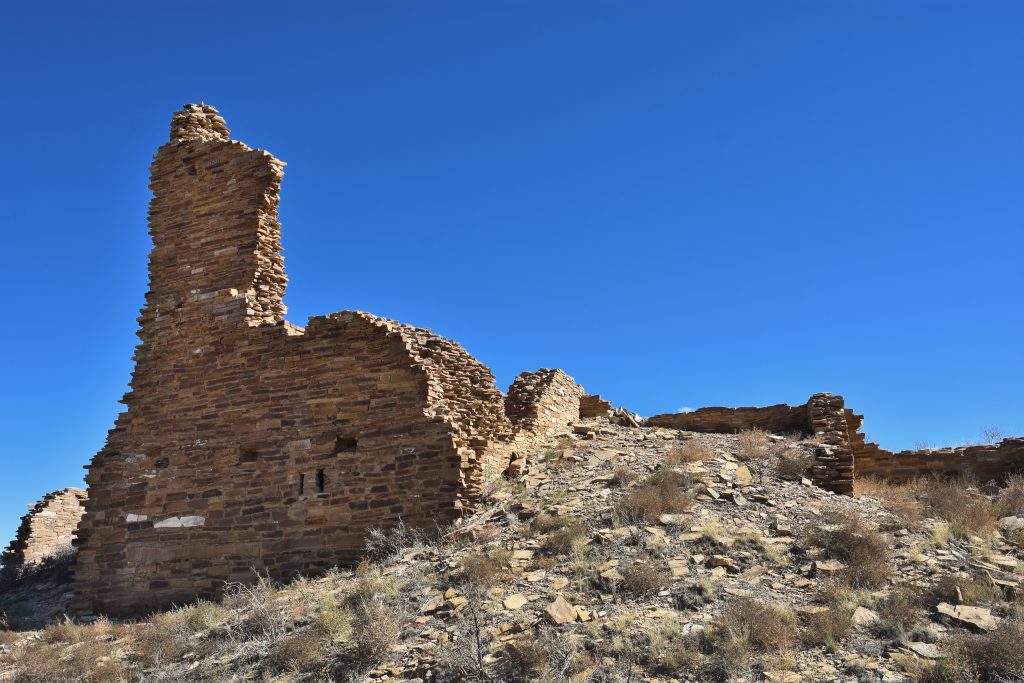
Accessibility is best from the north entrance, near the town of Nageezi, via County Road 7900, which is paved at first, then after a few miles turns into dirt road. There will be Chaco Canyon signs. From the south, visitors can also arrive via County Road 7900 (turn north at the town of Pueblo Pintado). In either direction, you will come to the junction of County Road 7950, which will take you west in Chaco Canyon. Be aware that these roads can be inaccessible in inclement weather and cellphone reception is spotty at best.
Navajo Tours USA
This Navajo-owned Tour Company will help you plan your trip to various parts of the New Mexico portion of the Navajo Nation. They offer amenities during their tour. Schedule an appointment through their website below.
TOURS OFFERED on NAVAJOLAND – Hiking, Camping, and can guide night photographers into areas such as the Bisti Badlands area!
For more information contact:
1 (855) 422-5476

- Posts by Date
- Posts by Location
- Wine Travel Posts
- USA Travel Posts
- Upcoming Posts & Trips
- Sign-up for our Newsletter
- Meet Stephanie & Adam
- Our Mission
- Our Travel Bucket List
- Travel Gear for Your Trip
- Travel Insurance Guide
- Media & Site Activity
- Interactive Workshops
Chaco Canyon: The Ancient Ruins of New Mexico

Glancing behind us through the mirror on the passenger’s side of the car, I watched as a plume of dust rose into the air, enshrouding the rear of the vehicle in a veil of tan and brown. Not quite a year before that drive, as I sat inside of an icebreaker ship bound for Antarctica , I remembered a phrase that seemed appropriate as our boat fought the turbulence of the Drake Passage: you don’t just visit Antarctica, you earn it. After miles of bouncing about in our rental car, I wondered if the same sentiment might be true for Chaco Canyon.

If you are wondering if a visit to Chaco Canyon is a great way to use your vacation time, here are some of the reasons you may love it as much as we did.
What is Chaco Canyon?
Officially known as the Chaco Culture National Historic Park, but commonly known by its more concise nickname, Chaco Canyon’s origins date back close to 12,000 years ago. Originally the home of the Anasazi, the community who lived in the region were mostly nomadic and were called the Basketmakers because they crafted baskets to preserve the food they gathered. Despite their nomadic tendencies, by the mid-800s AD they were in the midst of constructing large-scale architectural projects that relied on advanced masonry techniques and resulted in enormous, primarily residential buildings to house the Chacoan people.

By the mid-1100s Chaco Canyon began to experience a decline from which it never recovered. Many of the people who lived there moved on to new parts of the region, ultimately abandoning the settlement. It would be more than 600 years later when, in 1823, Chaco Canyon would be documented as part of an expedition through the region led by New Mexican governor José Antonio Vizcarra. For decades, archaeologists remained busy excavating and discovering tens of thousands of artifacts that helped to tell the story of Chaco Canyon, the Anasazi, and the peoples who both lived and connected there. Some archaeologists have compared their findings to the sites excavated in Egypt , which tell similar stories about the social and cultural societies built by people centuries ago. In 1987, Chaco Culture National Historic Park was designated as a UNESCO World Heritage Site. Despite the incredible amount of information that has been gathered from what was left behind, there is still far more that has not been excavated or interpreted to this day.
Chaco Canyon: Petroglyphs and Ruins
To visit Chaco Canyon is to immerse yourself in an incredible number of notable spots of social, spiritual, and historical significance. When visiting, it is possible to take either a professionally guided or a self-guided tour. Guided tours are offered regularly from May until October each year, and self-guided tours are easily completed based on your speed and interest in the buildings and sites located along the park’s Canyon Loop Drive. No matter which type of visit you prefer, there are a few sites you will want to include on your Chaco Canyon itinerary.
► Petroglyphs

► Casa Rinconada
Casa Rinconada is one of four kivas at Chaco Canyon. In Chacoan culture, kivas were rooms used for religious or political purposes. It is a large space that featured plenty of seating and was somewhat deeply entrenched in the ground, placing it a bit below the surface of the ground within the community. Casa Rinconada also featured a long underground passage that was likely used to bring people into the space during rituals, possibly as a surprise to others already in the kiva. It’s a well-preserved and interesting look into how meeting spaces were defined, constructed, and used in Chaco Canyon.
► Pueblo Bonito

► Pueblo del Arroyo
Built due to overpopulation and crowding at other great houses, Pueblo del Arroyo was constructed toward the end of Chaco Canyon’s period of large-scale growth in the mid-11th century. Close to Pueblo Bonito and boasting 300 rooms, it was the fourth-largest great house in Chaco Canyon and included 14 kivas. Although most great houses had a south-facing orientation, Pueblo del Arroyo faced to the east. Few artifacts that shed light into life in Chaco Canyon have been retrieved from the location, although it is recognized as a significant site within the landscape.
► Chetro Ketl

► Hungo Pavi
Another example of a large great house is Hungo Pavi, which is a bit isolated from many structures at Chaco Canyon. About a mile away from many other locations of interest, Hungo Pavi’s ruins feature more than 70 rooms. It also hosts the ruins of its own circular kiva. The great house was most likely used to house people who lived in the area as opposed to royalty or religious leaders.

► Una Vida
Dating back to approximately the time of Pueblo Bonito, Una Vida—which translates to One Life—is one of the original three great houses in Chaco Canyon. The site is particularly interesting because it is one of the least excavated areas of Chaco Canyon, which means it is one of the most naturally preserved spots in the park. With 160 rooms it is not one of the largest structures constructed by the Anasazi, but it does provide good insight into living conditions for those who called it home.
This video from Visit New Mexico provides some additional information and an overview of the history of the region.
How Do You Get to Chaco Canyon?

There are additional routes from the south that will take you to Chaco Canyon, but those roads require significantly more time on unpaved roads. If you can take the northern route your journey will be a bit shorter—and a bit smoother.
Chaco Canyon is not situated near any major city; the closest city is Albuquerque , which is between 2.5 and 3 hours away. It’s also within driving distance of a few other key attractions, including Monument Valley (about 4 hours away), Four Corners Monument (about 2.5 hours away), and Taos Pueblo, a UNESCO World Heritage Site that is about 3.5 hours away and is another popular site worth visiting. As an important note, there are no public transportation options available; your journey to Chaco Canyon can only be taken by car.
More Information: NPS.gov/CHCU
What to Do at Chaco Canyon
When it comes to visiting Chaco Canyon, there is a vast amount of things to do if you love national parks and the outdoors. Hiking is one of the most popular activities; there are four backcountry trails that extend as long as eight miles, allowing plenty of opportunities to stretch and challenge yourself while taking in some of the incredible views of the ruins and the landscapes beyond them. Wearing good, solid hiking boots or shoes is key; we attempted a few of the trails and found they benefit from some preparation and smart footwear choices to ensure you keep your balance. Some spots also require traversing narrow spaces and situations that approximate rock scrambles , so be sure to know your limits and how far you plan to go.

No matter what your plans may be, visit the Chaco Canyon Visitors Center before you explore the rest of the park. The visitors center is a great place to find park information, chat with knowledgeable rangers, and get a sense for what you will see once you are walking along the ruins. We found our stop at the visitors center to be a nice way to ground our experience and ensure we made the most of the time we had there.
There is a ton to see and do at Chaco Canyon, and it’s a good idea to plan to spend at least a half day there if possible. Because it is tough to access and requires a bit of a commitment as far as your vacation time is concerned, make the most of your investment by planning to spend as long as possible there. We spent more than half a day exploring, and we agreed it was one of the best days we spent during that vacation—and one of the most unexpectedly fun destinations we have visited.
Tips for Visiting Chaco Canyon
If you are planning to visit Chaco Culture National Historic Park, here are a few tips to help you make the most of your visit.
► Fill Your Gas Tank
Chaco Canyon requires some serious time on back roads to get to the park, and there are no opportunities to fill your gas tank once you leave the main roads. We stopped for gas at the Red Mesa Express station just before turning on to CR 7900, and having a full tank made us feel a lot better about navigating the unpaved roads—there would be little worse than getting stuck on them!
More Information: Google Maps Location for Red Mesa Express
► Brace for a Bumpy Ride

► Bring Water
Another shout out to the Red Mesa Express: we stocked up on water and snacks before departing for Chaco Canyon, a smart move because you won’t find restaurants or places to stop for food or drink once you get closer to the park. Chaco Canyon is dry and often has extreme temperatures—especially during the hot summers—so having extra water is a great idea.
► Wear Sunscreen
One of Adam’s favorite tips for any trip is to wear sunscreen, and that is doubly true at Chaco Canyon, where high altitudes (more than 6,000 feet above sea level!) can contribute to strong sunrays. You’ll be outside quite a bit during your visit, so wear some sunscreen to protect yourself—and don’t forget a hat and sunglasses for some additional comfort.
Where to Stay in Chaco Canyon
You won’t have a lot of choices when it comes to lodging, especially at the park itself: aside from camping, the closest town will be Farmington, New Mexico, which is 90 minutes north and has several hotel choices. We often find the best hotel deals using Booking.com, and we recommend it as a great tool to find a hotel near Chaco Canyon.
Enjoy Chaco Canyon!

Chaco Canyon is a wonderful place to visit; it will undoubtedly become one of your favorite vacation memories and will inspire you, like it has us, to learn as much as you can about the people and communities that shaped our planet long before our time.

Related Posts
New Mexico is one of our favorite states to visit! Here are a few places to consider for your next vacation.

Fort Craig: The Civil War Battlefield in New Mexico

The Hatch Chile Festival

White Sands National Monument

Pie Town, New Mexico: Why You Should Visit

Share This!
- Skip to global NPS navigation
- Skip to this park navigation
- Skip to the main content
- Skip to this park information section
- Skip to the footer section

Exiting nps.gov
Alerts in effect, plan your visit.
Last updated: February 12, 2024
Park footer
Contact info, mailing address:.
PO Box 220 Nageezi, NM 87037
505 786-7014
Stay Connected
It's one of the questions we hear most often, and the answer is, YES! The site that is part of our museum and grounds, Salmon Ruins, is a partially excavated Chacoan Outlier village. Because so much of it was excavated, and we give visitors an extensive trail guide at the front desk when they first enter, we only give guided tours of the Salmon site on special occasions, such as our Summer Solstice Alignment tour or a student group's visit. We prefer for people to visit the site and outdoor exhibits at their own pace, read as much of the guide as they are interested in, and then ask us questions they might have developed when they get back inside. But for some of our travelers, the more sites they visit, the more they want to know. Some travelers have always wished to spend the day with a professional archaeologist and ask all the questions they've never been able to find answers for - not just about the Southwest, but archaeology around the world.
Those kind of travelers are some of our favorite people! After all, what good is our job of studying cultures of the present and past if we only have other researchers to share our discoveries with? We love the chance to take people out to visit sites that they might not have heard of or have no safe way to access without a local guide who knows where to go (or not go!), and this region is packed with them! Every tour is specially adapted to the people who are participating on that day. You will never be made to feel like the information and presentation is memorized and recited, because the tour is based entirely on the questions you ask. Which sites we visit, how fast we walk, and how much time we spend is also based on the abilities and interests of the people who are participating on that day.
Every tour begins at 8 am and ends between 4 and 5 pm the same day. Your tour guide, a professional archaeologist who has worked in the region for many years, will be doing all the driving to save you and your vehicle from rough or dangerous roads and weather conditions. Your guide will attempt to answer all of your questions, explain how archaeology is performed today, and show you around a variety of sites. All of the water you will need (a lot, during hot times of the year!) and a hearty lunch will be provided for you as well. If this sounds like something you would be interested in, you'll need to decide where you want to go!
Arches and Archaeology
OPEN 9-5 daily. Access to grounds is permitted through museum ONLY.
Bisti Badlands
One of the most important resources in the Four Corners states are their huge expanses of public land, mostly managed by the Bureau of Land Management or BLM. People know that this landscape contains tens of thousands of archaeological sites, but there are also hundreds of natural sandstone arches to be discovered. Many of the arches are located close to archaeological sites and rock art panels. On this tour, we'll visit some of our favorite arches and hoodoos (rocks shaped by the wind to look like people, animals and fanciful shapes) as well as some of the archaeology of the area. The views can't be beat! This is an extremely flexible tour that can involve a lot or a little hiking, depending on your interests and abilities. There are so many arches in this area, that we can do at least 10 completely different arches tours, so come back again!
The most requested of our tours is a visit to Chaco Canyon, which is extremely difficult to access due to bad road conditions and, at certain times of year, rain and mud that makes the road impassible. Once in Chaco, we'll visit several of the Great Houses - which ones depends on your abilities and interests, but Pueblo Bonito is always included, and talk about the people who built these complex cities. Chaco is only one branch of a wide-spread cultural group who built villages throughout the southwestern states and were the ancestors of people who ultimately developed into the 20 modern day Pueblo tribes. Salmon and Aztec are just two of several hundred Chacoan outlier villages, which are part of the network that enabled people to trade and interact across the hundreds of miles of southwestern desert between 1200 and 800 years ago.
You may have driven through the Navajo Nation, but before the Din'e (a word in their own language that means "the People") were forced onto the reservation their nomadic lifestyle brought them down from the Canadian plains, through Wyoming and Colorado. By the 1400s they were hunting, gathering, and experimenting with agriculture in northwest New Mexico. During the 1600s they began building defensive structures to protect their families and livestock from warfare with the Spanish explorers and other displaced tribes. We'll visit several of these defensive "Pueblito" structures as well as spectacular rock art from the same era. In the "Dinetah" region, it is possible to see many of the places that are identified in Navajo mythology. This tour can involve a lot or a little hiking, depending on your needs, interests and abilities.
Do You Give Tours?
Dinetah (navajo defensive sites), chaco canyon.
This tour is purely geology and paleontology - no archaeology exists in this region. Badlands are by definition landscapes that are unsuitable for human habitation. But don't let that deter you - much older creatures once lived here and their fossilized remains are frequently seen, along with otherworldly formations carved by water and wind. This hike is our most strenuous - it is a minimum of 4 miles round trip. The longest Bisti hike we've ever led was at least 8 miles, and each participant must have a backpack and carry all their water and food. Badlands are dangerously hot and unsafe to visit in the summer, so this tour is not available May 1 through September 30. Already visited? There are many variations and no trails - we can find something you haven't seen!
Copyright May 1, 2020 San Juan County Museum Association at Salmon Ruins Museum. All rights reserved.

The Budget Savvy Travelers
BREAKING FREE WITHOUT BREAKING THE BUDGET
Home » 7 Must-Do Things to Do at Chaco Canyon
7 Must-Do Things to Do at Chaco Canyon

Chaco Culture National Historical Park or Chaco Canyon is America’s token archaeological site, comparable to Egypt’s pyramids or Peru’s Machu Picchu. The national park contains an interesting collection of ancient ruins that date back over 1,000 years.
The focal point for most visitors of Chaco Canyon is Pueblo Bonito, the largest prehistoric Southwest Native American dwelling ever excavated. However, the biggest thrill and highlight of the day during our visit was taking the Pueblo Alto Trail up the side of a cliff to gain an aerial perspective of Pueblo Bonito. Don’t worry, you’ll be fine as long as you’re not claustrophobic or scared of heights—kidding!
Brief History of Chaco Culture National Historical Park
After walking through the dry barren landscape it may be hard to believe that about 1,000 years ago Chaco Canyon was a lively bustling city. Its inhabitants were the Anasazi (“Ancient Ones”), ancestors of the modern Pueblo Indians (Rio Grande Pueblo, Hopi, Zuni, etc.).

The Anasazi are believed to have lived in the Four Corners area as far back as 1500 B.C. Furthermore, from about A.D. 200 to A.D. 1300, the Anasazi built many significant settlements in the area including in Navajo National Monument, Mesa Verde National Park, and Chaco Canyon.
From cliff-sited dwellings and small pit houses to massive grand houses, the Anasazi lived in a wide variety of structures. What makes Chaco Culture National Historical Park so special is that it was constructed during the peak of cultural and societal development. In terms of historical significance and uniqueness, Chaco is oftentimes compared to the ancient city of Rome, Egypt’s pyramids, or Stonehenge.
Chacoan Society
The Anasazi who lived in Chaco Canyon are now referred to as Chacoans. Furthermore, their society flourished from A.D. 1000–1150. Chacoans built 16 major complexes made from tabular sandstone slabs, clay mortar, and timber imported from distant mountain areas.

Referred to as a great house, Pueblo Bonito was a massive building that had three-foot-thick walls and stood nearly 50 feet high. The impressive masonry architecture attracted other tribal members. Thus, Chaco quickly became the epicenter for the Anasazi people, serving as the most significant hub for trade, ceremony, and administration. These Chacoan complexes are the largest buildings constructed in North America before the 19th century.
Beyond their engineering achievements, they constructed intricate astronomical elements which enabled them to accurately track equinoxes, solstices, lunar standstill, and measure time. As a result, Chacoans had the ability to anticipate the movements of planets, stars, the moon, and the sun.

Many visitors to Chaco Culture National Historical Park leave absolutely astonished by the magnitude of the constructed buildings. Others depart impressed, never knowing about the cultural and engineering feats that took place in North America before the arrival of Europeans. If the history of Chaco piques your interest, you may be interested in reading The Chaco Meridian or House of Rain: Tracking a Vanished Civilization Across the American Southwest before visiting the park.
Where to Stay Near Chaco Canyon
We visited Chaco Culture National Historical Park during our journey down Route 66 . Also, the closest lodging options from the south, along Route 66 are in Gallup and Grants, approximately 90 miles away. While, the closest options overall are from the north in Bloomfield, approximately 60 miles from the park.
Chaco Canyon is remote. In fact, many people think that the park would be one of the nation’s most popular if it wasn’t so hard to reach. For example, the last 20 miles to the park (coming from the south) take place on a washboard dirt road.
Even when regarding all of the obstacles, the park is still very much worth visiting. Moreover, below are the best places to stay near Chaco Canyon.
Grants/Gallup (Route 66/I-40)
Budget: Comfort Suites (comfortable) Mid Range: El Rancho Hotel (historic Route 66 hotel-this is where we stayed!) Luxury: Fairfield Inn & Suites (pool & hot tub)
Bloomfield/Farmington (US Hwy 64)
Budget: Super 8 by Wyndham (great staff) Mid Range: Best Western Plus Territorial Inn & Suites (pool & hot tub) Luxury: Home2 Suites (fitness center & pool)
Finally, camping is possible at Chaco Culture National Historical Park. Specifically, at Gallo Campground, just east of the visitor center, sites are available for RVs, tents, and car camping.

7 Must-do Things To Do at Chaco Canyon
Chaco Culture National Historical Park’s remote location makes it a great place to enjoy history, nature, solitude, and night skies. For these reasons, Chaco Canyon is an ideal place for hiking, cycling, and camping.

However, for most first-time visitors, the highlight of visiting Chaco is simply exploring the ancient ruins.
SEVEN MUST-DO THINGS AT CHACO CANYON
Select a must-do thing or scroll down to view all.
1. Pueblo Bonito 2. Chetro Ketl 3. Petroglyph Trail 4. Pueblo del Arroyo 5. Casa Rinconada 6. Hungo Pavi 7. Una Vida & Petroglyphs in Fajada Gap
Below are seven amazing things to see at Chaco Culture National Historical Park.
1. Pueblo Bonito
Pueblo Bonito is the most important, most celebrated, and scrupulously investigated site in Chaco Culture National Historical Park. Early Spanish explorers named the massive great house Pueblo Bonito because it resembled a ‘pretty village.’ As a result, Pueblo Bonito is considered a must-see and a highlight of the canyon.
Guests may tour the remains of Chaco’s largest great house on a 0.6-mile walking trail. To begin with, construction on Pueblo Bonito began in about AD 850 and lasted for about 300 years. Upon completion, the massive complex covered three acres, was five stories high, and had about 800 rooms.
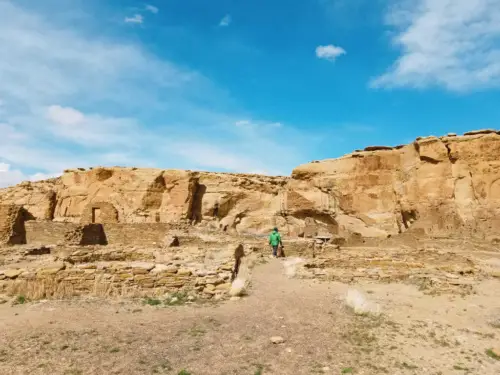
Pueblo Bonito was the center of the Chacoan world and was constructed in the shape of a semicircle. The central plaza features numerous kivas. These were semi-subterranean circular rooms that archaeologists believe were used for religious, political, and economic ceremonies. Moreover, great kivas are significantly larger than standard kivas and used for only the most important ceremonies.
Features of a Chacoan great kiva include four seating pits for roof supports, niches in the wall, a bench around the circumference, two vaults on either side, and a raised firebox in the center. Lastly, rectangular rooms were used for housing and storage surrounding the plaza.
Pueblo Bonito Overlook
Plan on spending about one hour exploring the ruins. Afterward, enjoy an amazing view of the great house on the Pueblo Alto Trail. The trailhead starts near the Pueblo del Arroyo parking lot and proceeds behind Kin Kletso or “yellow house.”
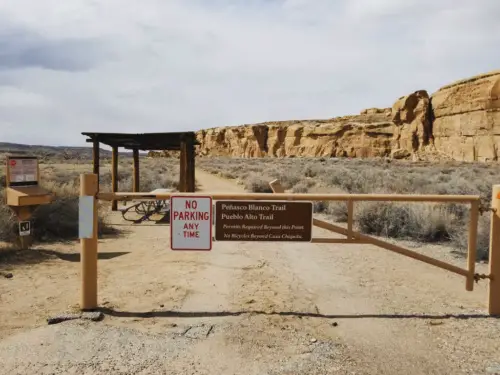
The short 2.0-mile hike was the highlight of our trip to Chaco Culture National Historical Park. Hikers must walk up an unexpectedly steep and narrow crevasse to get to the top of the cliff.
Upon ascension, the remaining 0.7 miles to the scenic overlook is fairly flat. Plan on taking at least one hour to complete the walk. Don’t forget to leave a permit (which is in a box near the trailhead) on the dashboard of your vehicle.
2. Chetro Ketl
Chetro Ketl is the second-largest great house and is located just before Pueblo Bonito along the 9-mile Canyon Loop Drive. With about 400 rooms, the D-shaped structure is believed to have been used as a place for large-scale ceremonies.

It’s estimated that it took 50 million sandstone slabs and 26,000 trees to erect Chetro Ketl over some 500,000 man-hours. At nearly 3 acres, Chetro Ketl is considered the largest great house by area in Chaco Culture National Historical Park.
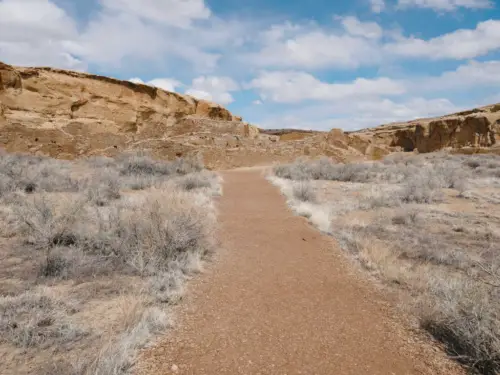
A 0.5-mile trail guides visitors through the ruins of Chetro Ketl. Highlights of the tour include a well-preserved great kiva, elevated kivas, and several hundred feet of intact perimeter wall. Plan on allowing a half-hour to tour Chetro Ketl.
3. Petroglyph Trail
After touring Chetro Ketl make sure to check out the Petroglyph Trail. A short trail runs along the cliff face between Chetro Ketl and Pueblo Bonito and features various petroglyphs.
As you walk along the trail, make sure to look both high and low as petroglyphs are scattered throughout the cliff face. Archaeologists assume that the higher petroglyphs were created by standing on roofs or using ladders. Holes in the wall indicate that some sort of heavy beams may have been used to anchor the building into the cliff.
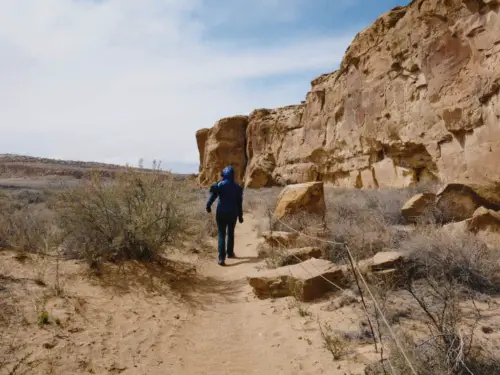
Due to the size and elevation of the petroglyphs, bringing travel-sized binoculars or a quality zoom camera is recommended. Allow about 20 minutes to complete the 0.3-mile Petroglyph Trail.
4. Pueblo del Arroyo
Pueblo del Arroyo is the last major stop along the 9-mile Canyon Loop Drive road. Believed to have had about 300 rooms and 17 kivas, the D-shaped great house’s name means “village by the wash.”

As the fourth largest great house in Chaco, Pueblo del Arroyo is unique in that it’s the only great house not constructed along the cliff face. Also, it’s the only one facing east, instead of south. Archaeologists believe it was constructed to account for overcrowding at Pueblo Bonito.

Highlights of Pueblo del Arroyo include a rare triple-walled structure that is believed to have been used for ceremonial purposes, keyhole-shaped kivas, and well-intact walls. Due to accessibility to the parking lot, plan on allowing about 20-30 minutes to tour Pueblo del Arroyo.
5. Casa Rinconada
Not being embedded within a large complex make Casa Rinconada a particularly special great kiva. Instead, it stands alone on the top of a small hill.
With a diameter of about 70 feet, Casa Rinconada is one of the largest known great kivas. Also, unlike the typical great kiva where the roof is at ground level, Casa Rinconada is partly above ground.

Two other interesting aspects of Casa Rinconada include the two T-shaped entrances on a south-north alignment and a subterranean passageway. This “secret” passageway would have allowed officiants to enter and exit the kiva by bypassing the entranceways.
The trail to Casa Rinconada is 0.5 miles long and traverses through a small Chacoan village. Consequently, walkers may view a wide variety of Chacoan buildings and architectural styles. Allow about 45 minutes to tour Casa Rinconada.
6. Hungo Pavi
Hungo Pavi is one of the first major stops upon departing the visitor center. While unexcavated, it’s still an impressive great house to tour in Chaco Culture National Historical Park and provides a glimpse of what these structures looked like before excavations.
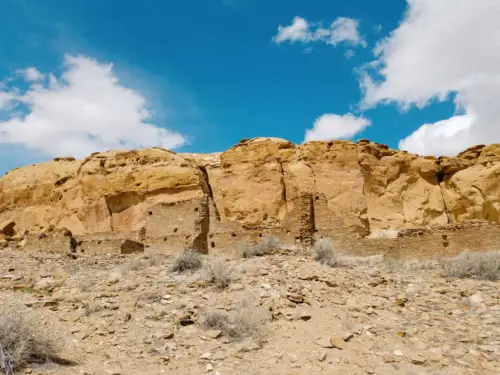
The ruins contain an enclosed plaza, a great kiva, and about 140 rooms. Also, the great house is likely to have been three stories tall and D-shaped. Allow about 15-20 minutes to tour Hungo Pavi.
7. Una Vida & Petroglyphs in Fajada Gap
The visitor center is the first stop for most guests to Chaco Culture National Historical Park. Visitors may purchase souvenirs including travel guides for each of the sites inside. Directly behind the center is a one-mile roundtrip trail to Una Vida that features several petroglyphs.

Una Vida and the visitor center are located in the Fajad Gap. One of the most prominent features that can be viewed along the trail is the Fajada Butte, which makes the landscape seem out of this world.
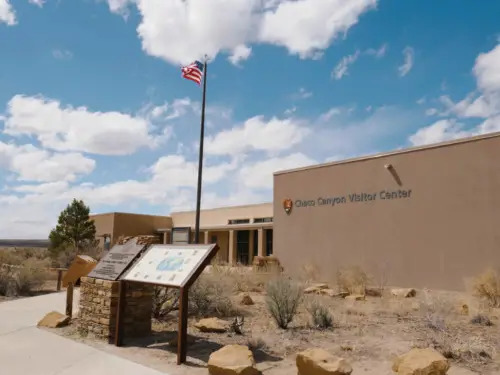
Along with Pueblo Bonito, Una Vida is one of the oldest great houses and with about 160 rooms, the fifth largest. The largely unexcavated site is in the shape of an irregular D and contains four kivas and one or two great kivas. Allow for between 45 minutes to 1 hour to complete the walk.
8. Bonus: Fajada Butte
Probably the most famous natural feature of Chaco Canyon is Fajada Butte. In fact, for most visitors, it’s the first thing that catches their eye when entering the park.

Visitors are not allowed on or really even near the isolated hill for several reasons including the fact that local tribes consider it a sacred place, there is no maintained trail to reach the top, and its fragility. Also, there is a set of spiral petroglyphs known as the “Sun Dagger” that make this location one of the most special in the park.
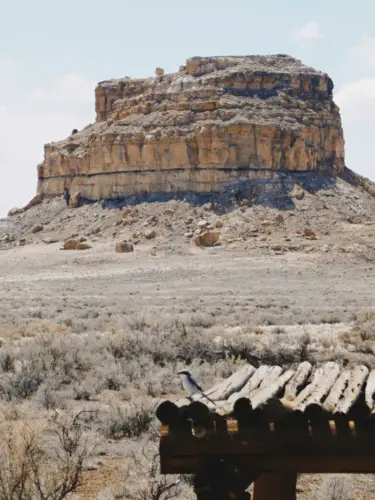
Chacoans had a sophisticated knowledge of the planetary system and used the Sun Dagger site to integrate the spiritual and physical worlds, set ceremonial calendars, and plan agriculture. More specifically, Chacoans used the spiral petroglyphs to record the day of solstices, and equinoxes, and track the 18.6-year lunar cycle.
Sadly, due to shifting rock slabs and erosion the Sun Dagger site no longer works as it once did. Therefore, it’s best to enjoy it from a distance!
Below is the map for the Pueblo Alto Trail in Chaco Canyon.

We Need Your Help
Did you find this article helpful? If so, bookmark it and when you’re planning your next vacation click on any of the links below before finalizing reservations. You’ll get the best price, we’ll earn a small commission, and you’ll help support future articles.
BEST TRAVEL SEARCH ENGINES
🏘️ Book Your Accommodation
We use Tripadvisor and Priceline’s Express Deals to compare prices and reviews in advance and check availability
✈️ Book Your Flight in Advance
To find the cheapest flight options, you can use WayAway and Skyscanner to find the most suitable choice for you
🚗 Reserve Your Rental Car
Use DiscoverCars and Skyscanner to compare prices and view the largest selection of vehicles
Share this:
- Click to share on Twitter (Opens in new window)
- Click to share on Facebook (Opens in new window)
- Click to share on Pinterest (Opens in new window)
- Click to share on Telegram (Opens in new window)
- ← Best Fort Myers Boat Tours—Fun Options For Everyone
- 7 Impressive Luxury Glamping Sites Near National Parks →
Similar Posts

21 Easy Jobs You Can Do While Traveling

Traveling to Manila, Philippines – 8 Exclusive & Must-Visit Places

Best Hotel in Normandy > Luxury and History Unveiled
Leave a reply cancel reply.
- TRAVEL ARTICLES
- BOSNIA AND HERZEGOVINA
- GREAT BRITAIN
- MASSACHUSETTS
- NORTH CAROLINA
- PENNSYLVANIA
- SOUTH CAROLINA
- PHILIPPINES
- SAUDI ARABIA
- UNITED ARAB EMIRATES
- REPUBLIC OF THE CONGO
- SOUTH AFRICA
- AMERICAN SAMOA
- COOK ISLANDS
- NEW ZEALAND
- DOMINICAN REPUBLIC
- PUERTO RICO
- TIPS, TRICKS, AND BUDGET-SAVVINESS
- FIRST 6 MONTHS
- MONTHS 7-10
- MONTHS 11-15
- MONTHS 16-18
- MONTHS 19-24
- PROJECTED ROUTE
- LATEST VLOGS
- EPISODE 1-5: BUENOS AIRES, ARGENTINA
- EPISODE 6: URUGUAY
- EPISODE 7: ANTARCTICA
- EPISODE 8: PATAGONIA
- EPISODE 9: SOUTH AMERICAN WINE COUNTRY
- EPISODE 10: THE COOK ISLANDS
- EPISODE 11: NEW ZEALAND AND AUSTRALIA
- EPISODE 12: INDIA
- EPISODE 13: BORNEO
- EPISODE 14: THAILAND
- SPONSORED CONTENT
- WHY DID WE QUIT OUR JOBS TO TRAVEL?
- OUR PAST TRAVELS

- Eat + Drink
- Meetings + Weddings
- Accessibility
CHACO CANYON
On June 18, 1823, while leading an expedition to the heart of Hopi lands, Mexican soldier José Antonio Vizcarra (soon to be the third Mexican governor of New Mexico) dipped into a canyon and came across the remains of the largest series of structures built by man in North America. What Vizcarra found in that canyon was more than impressive — it was a rare design that, to this day, stands the test of time. Constructed of sandstone and timber, Chaco Canyon was the cultural center for the Ancient Pueblo people between 900 – 1150 AD. Now managed by the National Park Service, Chaco Canyon is a testament to human ingenuity and the merging of spiritual life, community and commerce.
In 1987 Chaco Canyon was designated as a United Nations Educational, Scientific and Cultural Organization (UNESCO) World Heritage Site. This is a reflection of its extraordinary cultural and physical significance. The purpose of UNESCO designations is to preserve and protect World Heritage Sites for the benefit of humanity. The program's recognition of Chaco Canyon pays respect to the ancient and the Native cultures. The designation is not granted lightly; there are only 802 designated UNESCO Cultural World Heritage Sites in the world. Of those, nine UNESCO designated sites are in the United States and three are in the Southwest. The Southwest designations include Chaco Canyon, Taos Pueblo and Mesa Verde. All three are within a day's drive from our hotel near Chaco Canyon, New Mexico.
CHACO CANYON DAY TOURS
Heritage Inspirations, Heritage Hotels' partner tour company, offers day trips from the hotel to Chaco Canyon - a UNESCO World Heritage Site and National Park. Experience this major ancestral Puebloan center of migration, grand construction, and cultural integration and see why Chaco is a fascinating place of mystery. Learn more and book your day tour.
Chaco Canyon Glamping – New Moon and Equinox Expeditions
September 25, 2021 by Angelisa Murray
Glamping with Heritage Inspirations in Chaco Canyon ,
Will connect your body to your soul . the open blue skies with billowing clouds are as mesmerizing as watching the waves of the sea collide with the shore. feeling the sandstone cool your skin and warm your soul is invigorating . connecting with an ancient civilization whose descendants are today, like centuries before, a thriving community rich in tradition, spirituality and social organization. as we dive deep into the corridors and corner windows that invite the sun into these ancient buildings, we become immersed in the elements created by this ancient, diverse civilization which thrived from 850 to 1250 ad..
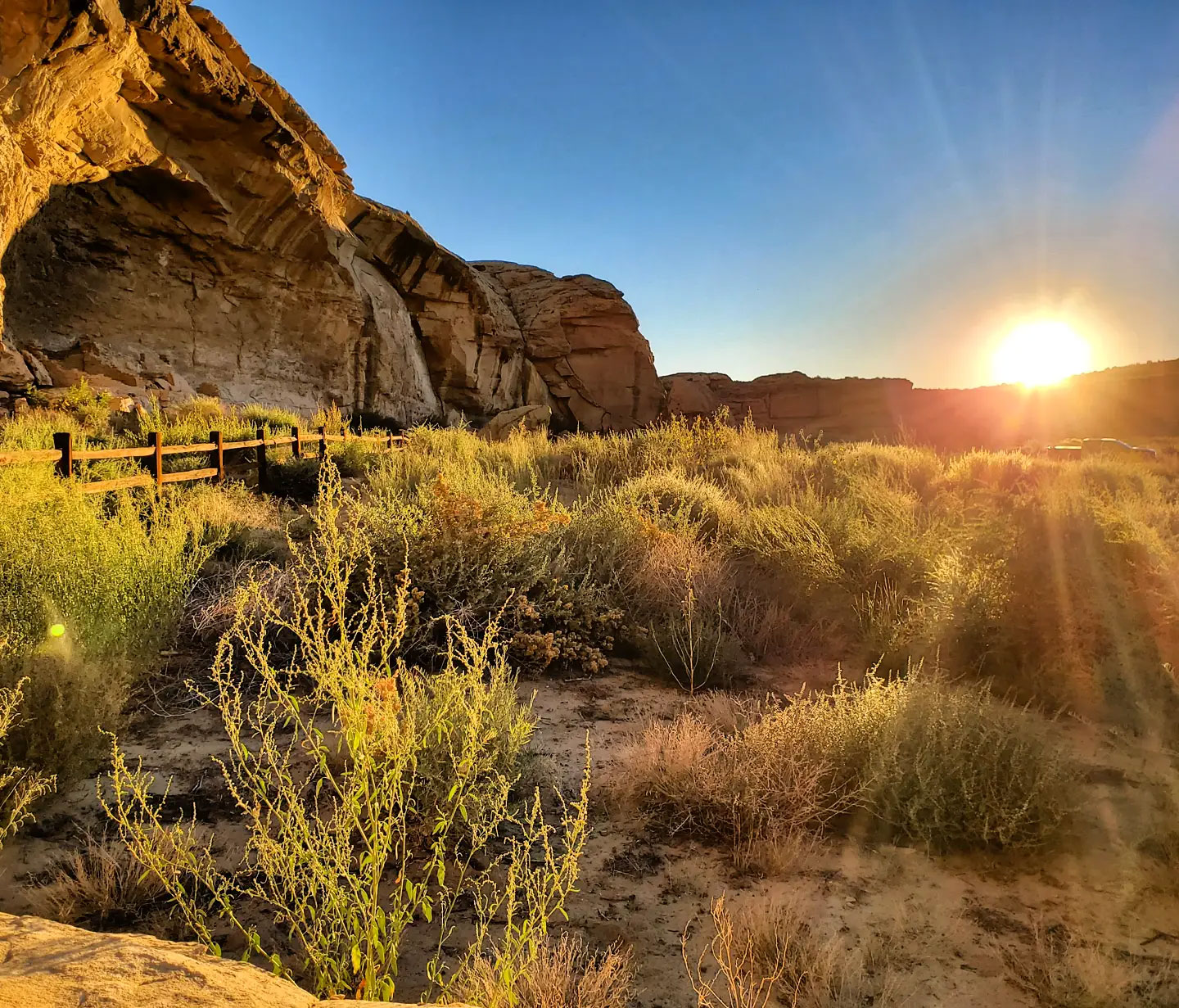
Go luxuriously wild in the high desert of New Mexico where comfort and adventure meet . Our two day tour is unlike any other. We connect culture, history, spirituality, and the surrounding desert with the flavors of The Land of Enchantment.
Our glamping experiences are a promise to connect you to the earth. Connect you to the past and draw from this experience to open your heart to what may come along in your path in life. Our glamping tribe roves with you, deep into the heart of Chaco Canyon, so that you are completely immersed in the sky, water, fire and earth. Our team travels ahead of you to set up the camp for each tour with deluxe amenities, including a raised bed-frame, memory foam mattress, bedside table, butterfly canvas chairs, plush rugs and southwest textiles. All you have to do is arrive and unplug. Our Heritage Inspirations Tribe will ensure that you can leave the busy day to day behind you as you become immersed in the story of the most resilient culture of New Mexico.
We have two distinct options with our Chaco Canyon Glamping Tours which are designed to highlight some of the most breathtaking phenomena of Chaco Canyon: New Moon Tours and our Equinox Tours. Both tours start and end at our travel hub inside Hotel Chaco in Albuquerque, New Mexico. Both tours equally dive deep into the heart of these ancient historical sites. Our guides will bring this UNESCO World Heritage Site to life with the stories of this ancient civilization, its history and traditions. You can read the complete daytime itinerary here. The nighttime and early morning programs are where these two options differ.
equinox TOURS
Our Glamping Equinox Tours take place on the Spring and Fall Equinox, in March and September every year and are designed to highlight the Equinox markers in Chaco Canyon which demonstrate that the people of Chaco incorporated celestial movements into a variety of their architecture, art and culture. You’ll witness these alignments first hand and see how they indicate the people possessed a well-developed knowledge of astronomy and its relationship to the seasons.

Chacoans had such advanced astronomical knowledge and they used it to carefully align their great houses with the sun, presumably to witness indications of important calendar dates. When you experience the Equinox Glamping Tour, we’ll rise before sunrise and journey to Casa Rinconada, the largest known Kiva in Chaco Canyon to observe the light stream through two perfectly aligned east/west doors. We join the program hosted by the National Park Service that allows a limited number of visitors to experience this magic in Casa Rinconada. This phenomenon of the sunlight piercing through the center of these two doorways only happens two times per year, at sunrise on the Equinox. This alignment demonstrates how the carefully designed construction and the planned interplay of light and shadow functioned as a calendrical marker for the Chacoan people. It is like witnessing a piece of ancient wisdom in the present day. This phenomena was also the inspiration for our new logo and branding, as the image reflects the sun ray shining through the kiva that our amazing photographer Amanda captured during one of our glamping expeditions.
new moon TOURS
The New Moon tours, in April and Mary, are designed to feature the awe inspiring night sky, as Chaco Canyon has the distinction of being one of the few designated International Dark Sky Parks. Dark Sky areas are rapidly declining due to the prevalence of artificial outdoor light in our modern world. You will be spellbound by the resplendent array of stars and the Milky Way glowing overhead, while pondering the ancestral Puebloan peoples’ use of ancient astronomy to build their vast infrastructure and civilization. Then we rise early to hike among the stars to a point overlooking Fajada Butte. The hike winds above the canyon floor providing spectacular views back at our camp as we wander along the canyon trail to witness the sun rise upon the ancient sandstone. The new moon is the most magical time to witness the Dark Sky because without the light of the moon, the stars have the chance to sparkle and shine transporting you to a dreamlike state or another world.

Which tour is right for you? Ask us to get more information. Don’t hesitate as tours fill up quickly and these adventures are sure to sell out.
LEARN MORE ABOUT THE CHACO CANYON glamping experience »
2 thoughts on “ Chaco Canyon Glamping – New Moon and Equinox Expeditions ”
I’m interested in the Moon tours
Fantastic Carol! Our New Moon Tours Glamping in Chaco are in April and May. We have a few spots left, here is the tour page to explore: https://heritageinspirations.com/chaco-tours/chaco-canyon-glamping-overnight/ You can also email us at [email protected] if you have further questions. We have limited availability so please contact us soon. Thanks so much for reaching out!
Leave a Reply Cancel reply
Your email address will not be published. Required fields are marked *
This site uses Akismet to reduce spam. Learn how your comment data is processed .

Speak with your inspired travel planner
1-888-344-tour(8687).
H.I. HQ TOUR HUB, TAOS inside EL MONTE SAGRADO RESORT 317 Kit Carson Road | Taos, NM 87571 575.737.9827
NEW MEXICO TOURS Santa Fe Tours Taos Tours Chaco Canyon Tours Albuquerque Tours
GLAMPING E-BIKE PRIVATE TOURS
Road Trip Itineraries Virtual Inspirations
Explore the Photo Gallery
MEET THE TRIBE Our Mission: Travel for Good Press Blog Shop Merch Careers Getting Here: Fly Direct Contact + Locations
Download Our Brochures Cancellation Policy Privacy Policy Terms of Use
-->
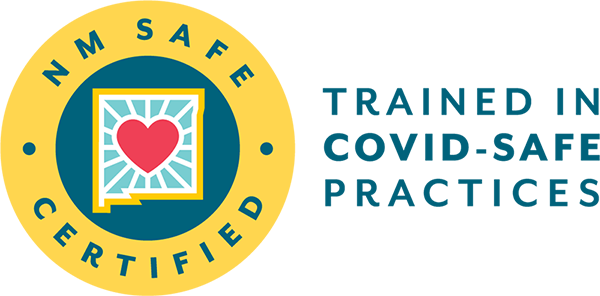
© 2024 Heritage Inspirations LLC
Photographer Credits: Paulina Gwaltney Photography , Amanda Powell · adrift a dream photo . video
© All Rights Reserved. All materials and photographs on website by Heritage Inspirations LLC. Absolutely no usage without written permission.
- Things to Do
- Vacation Rentals
- Travel Stories
- Rental Cars
- Add a Place
- Travel Forum
- Travelers' Choice
- Help Center
Chaco Canyon - Navajo Tours USA
- United States
- New Mexico (NM)
- Nageezi
- Nageezi - Things to Do
- Navajo Tours USA
There is no way we could have fully appreciated this amazing experience without having Kailo point... read more
We do a lot of hiking and rarely use a guide. But hiring on with Navajo Tours to explore the Bisti... read more
Chaco Canyon
We visited Chaco Canyon with Kialo Winters. He was extremely helpful from the day I booked the tour. He sent us the Google map in a link after I told him we were driving from Gallup. This worked on our GPS all the way even though the website for the park said that GPS will not work and not to rely on it. He also sent our itinerary and information regarding COVID-19. When I told him we were vaccinated so not to worry, he texted back that he too was fully vaccinated. Kialo is well versed in the historical and cultural aspects of Chaco Canyon. He is personable and my husband and I enjoying getting to know him. My husband always has numerous questions for guides and Kialo answered all without becoming impatient as some guides we have had have. I know that Navajo Tours will continue to be successful if it continues in being as thoughtful and helpful as it was with us.
I just returned from spending 2.5 days with Kialo from Navajo Tours in the Bisti & Chaco Canyon area. We had a wonderful time visiting both well-known and much less-known sites. Kialo knows the area intimately and t information on both scientific topics as well as Native / traditional history of the area. He is an extremely interesting person involved with a ton of community development efforts as well. I'd highly recommend Navajo Tours for a fun and unique experience around Bisti.
We just came back from a tour with Kialo and Gil and had a fabulous time. Besides helping us navigate really remote terrains with great patience and knowledge, Kialo spent a good deal of time sharing stories from his cultural Navajo/Pueblo background. He clearly is very proud of his heritage and has dedicated his life to creating opportunities for his family and his people. If you go with Kialo, he will add a lot of dimensionality to this region and provide a tremendous amount of context and history that in itself is worthwhile, not to mention the stunning scenery we got to experience. I can't recommend his tour more highly. We also went to Chaco Canyon with him, another must-see highlight.
The Bisti Area is so incredibly fascinating The shapes. The colors. The humility of seeing a 70 million year old petrified tree, but what made it come alive for us was the knowledge of our guide Gilbert. His explanation of the geology of the formations, the sculptures formed by the movement of water over millennia, the Dinosaurs that roamed the area, I couldn’t be more grateful. This area has evolved over million of years, and it also saddens and angers me to know that people are touring this area and destroying these monuments of nature by toppling them over or moving the rocks into places that nature did not intend them. We saw two such incidents while we were there which had happened since Gilbert had been leading a hike the week before. This is my third Dine Tour in different areas and each has been beyond excellent
Just finished up a tour of the Bisti Badlands with Kialo Winters of Navajo Tours and what an experience!!! Kiaro is so conscientious and open to sharing his knowledge and history. He welcomes questions and dialogue and we learned so much more than we would have if we would have gone alone. We enjoyed every minute and Bisti Badlands is not to be missed especially with Navajo Tours!
Navajo Tours is an excellent ethically run company. My experience on two tours could not have been better. Both guides were experienced, informative and managed to use the time to maximize the diversity of cultural and scenic opportunities. I have taken many tours and have never had better results. The Bisti and Chaco Canyon tours were both wonderful.

NAVAJO TOURS USA
2024 TOURS NOW OPEN
Natural Narratives: Hiking, History, and Indigenous Insight Tours - Bisti/De-Na-Zin Wilderness, Chaco Culture National Historical Park, Ah-Shi-Sle-Pah Wilderness, and more!

Bisti Wilderness Adventure
$140 read more.

Voices of the Pueblo: A Journey Through Indigenous Heritage
$84 read more.

Chaco Canyon Adventure
$157 read more.

Shiprock Peak
‘best trips 2019' natgeo travel.
The Bisti/De-Na-Zin Wilderness was listed among the best trips of 2019.

2024 Sunset+Night Sky Tours
STARRY Join us for a hike where the moon winks, stars dance, and the Milky Way shows off its cosmic twirl! 🌟🌙💫 …

Best Trips 2019

Tour Locations
Bisti Wilderness Adventure | 4 - 5.5 miles SUBSCRIBE | The Bisti/De-Na-Zin Wilderness is located in the San Juan Basin in northwest New Mexico. …

Testimonials
"We took the Crow Canyon tour and it was a wonderful experience, educational and deeply moving. We learned so much about the history of that magical place and the many people who have moved through it down the centuries. Kialo, Terri, and Gilbert were so warm and welcoming that we very quickly felt as if we were walking with old friends."
"TERRI & KIALO ARE INCREDIBLE GUIDES. We took a wonderful 5 hour walk in Bistah, and Kialo & Terri shared cultural and informative information about the area. Since we are retirees, and have limited abilities, Kialo and Terri were respectful to our abilities throughout the tour. We had plenty of rest and snacks on the tour. We have traveled to a lot of places across the U.S., and this is now our favorite spot!"
There can be no better way to view Chaco than through the eyes and mind of a Native American, and this experience was given to us by Kialo Winters, founder and owner of Navajo Tours USA. Because our vehicle was not appropriate for the road going into Chaco, Kialo met us and drove us into the canyon. During that portion of the trip, he talked about his family, his life, and growing up on the reservation. As we entered the site, we were awed by the grandeur, the vastness, and the serenity of Chaco. Kialo knows Chaco. He spoke of the history of the site, the development, the architecture, and the lifestyles of the people. He spoke of the geology and the expansion well beyond the impressive Pueblo Bonito. He was generous in answering all our questions and in taking good care of his guests. He provided an experience beyond our expectations and one to be long remembered. Highly recommend.
- Film in Farmington
- Sports Facility Guide
- Meetings in Farmington

Journey Into The Past Tours
Journey Into The Past Tours offers a unique opportunity to learn about and experience the amazing archaeological treasures of the southwest.
6131 US-64, Bloomfield, NM
505- 632-2013
Visit Website
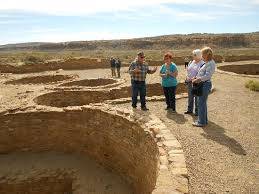
Simon Canyon Navajo Ruin
Frances Canyon Navajo Ruin
Crow Canyon Navajo Rock Art
Dinétah Navajo Ancestral Homeland
- Outdoor Adventures
- Native Culture
- Guided Tours
- Self-Guided Tours
- Performing Arts
- Four Corners
- Family Adventures

IMAGES
VIDEO
COMMENTS
Book Now. $ 157. per person. Chaco Canyon Adventure. Explore the UNESCO World Heritage Site of Chaco Culture National Historical Park in northwest New Mexico. Marvel at the thousand-year-old, resilient architecture of Chaco Canyon, where the Ancestral Pueblos showcased their exceptional engineering skills in designing Great Houses with ...
Transport yourself into another world, at Chaco Canyon! This UNESCO World Heritage Site and National Park lies on top of the southeastern Colorado Plateau's physiographic province in the San Juan Basin and had a diverse thriving culture from 850 A.D. to 1250 A.D. It served as the heart of spiritual and ceremonial practices for the Chacoan people.
Chaco Canyon Day Tour. Explore the mystery of Chaco Canyon UNESCO World Heritage Site with Heritage Inspirations. Featured in top publications, our tours unveil the enigma of this ancestral Puebloan site. $325 per person + tax*. VARIED PRICING: Hotel Chaco guests $299 + tax tour price per person. Saturday 7:15 am - 5:45 pm (Not offered in July ...
The 5-hour tours provide insights into both the history of the landforms and their Indigenous cultural significance. Enjoy additional tour offerings to Chaco Canyon, the surreal Ah-Shi-Sle-Pah Wilderness, and the majestic Shiprock Peak. Photo enthusiasts are encouraged to pack their gear to capture the spellbinding moments!
Preserving the largest concentration of large-scale ancient structures in the Four Corners built by the Ancestral Puebloans, Chaco Canyon is one of the most studied archaeological sites in the U.S. Southwest. Along with Aztec Ruins and several smaller Chacoan sites, the ancient ruins in Chaco Canyon are a designated UNESCO Heritage site since 1987, recognized for their universal value.
Explore the monumental structures and breathtaking landscape at Chaco, a thriving regional center for the ancestral Pueblo people from 850 to 1250 CE (Common Era), through guided tours, hiking & biking trails, evening campfire talks, night sky programs, and more. Chaco Canyon is a sacred and deeply personal place for many Indigenous peoples throughout the Southwest. Please visit with respect.
Private Tours. To get a comprehensive look at the expansive Anasazi territory, take a private tour. As you visit sites outside of the canyon, you gain awareness of the impressiveness of Chaco and ...
Chaco Culture National Historical Park, which contains Chaco Canyon, is one of the most impressive national historical parks in the United States. Not only does it inhabit 34,000 acres of protected wilderness, but it also houses 4,000 archaeological sites and is an International Dark Sky Park. ... Self-Guided Tour. Hungo Pavi - The first stop ...
The Chaco Culture National Historical Park (NHP) is the perfect getaway to explore the distinctive architecture, ruins, and ancient roads of this significant center of Puebloan culture. Explore the park through the day or enjoy a night in the canyon, camping, and stargazing. The choice is yours! Things to do in Chaco Canyon. Ranger tours at ...
Eventually, Chaco Canyon would be declared a National Monument in 1966 and then a National Historical Park in 1980. Officially, it's known as the Chaco Culture National Historical Park, though many simply call it Chaco Canyon. ... I decided to start with Pueblo Bonito to get some photos before one of the ranger-lead tours arrived.
For more information contact: Chaco Canyon National Historical Park. Managed by the National Park Service. P.O. Box 220. Nageezi, NM 87037. 505-786-7014. Click here to learn more about Chaco Canyon National Historic Park. Directions from Albuquerque - Milan - Chaco Canyon. Directions from Nageezi - Chaco Canyon.
Chaco Canyon Visitor Center model. By the time construction was complete, more than 9-miles of buildings stretched throughout Chaco Canyon.. Beyond the surprisingly advanced designs and incredible scope of the project itself, the site that served to govern the San Juan Basin also provided insight into one of the most interesting social experiments known to have occurred during that time in ...
Navajo Tours USA call 855-422-5476 or email [email protected]; Cycling at Chaco Canyon. One way to explore Chaco Culture National Historical Park is to bike. One option for cycling is the paved one-way Canyon Loop Road (9 miles & share with vehicles). There are two backcountry options: biking to Wijiji Trail (3 miles - start at Wijiji ...
Make your first stop the Visitor Center. From there, a 9-mile loop road accesses five major Chacoan sites, including Pueblo Bonito. Guidebooks for these sites can be purchased at the park store inside the visitor center. Pets are not permitted on these front country trails. The only exception are service animals. Overview of Chetro Ketl.
The most requested of our tours is a visit to Chaco Canyon, which is extremely difficult to access due to bad road conditions and, at certain times of year, rain and mud that makes the road impassible. Once in Chaco, we'll visit several of the Great Houses - which ones depends on your abilities and interests, but Pueblo Bonito is always ...
For these reasons, Chaco Canyon is an ideal place for hiking, cycling, and camping. Chaco is also a great place to enjoy the wildlife! However, for most first-time visitors, the highlight of visiting Chaco is simply exploring the ancient ruins. ... Guests may tour the remains of Chaco's largest great house on a 0.6-mile walking trail. To ...
Constructed of sandstone and timber, Chaco Canyon was the cultural center for the Ancient Pueblo people between 900 - 1150 AD. Now managed by the National Park Service, Chaco Canyon is a testament to human ingenuity and the merging of spiritual life, community and commerce. In 1987 Chaco Canyon was designated as a United Nations Educational ...
new moon TOURS. The New Moon tours, in April and Mary, are designed to feature the awe inspiring night sky, as Chaco Canyon has the distinction of being one of the few designated International Dark Sky Parks. Dark Sky areas are rapidly declining due to the prevalence of artificial outdoor light in our modern world.
Navajo Tours USA. Embark on an enriching hike through the Bisti Badlands with Navajo Tours USA. The 5-hour tours provide insights into both the history of the landforms and their Indigenous cultural significance. Enjoy additional tour offerings to Chaco Canyon, the surreal Ah-Shi-Sle-Pah Wilderness, and the majestic Shiprock Peak.
The Bisti and Chaco Canyon tours were both wonderful. Date of experience: March 2021. Ask I8990KDrobertr about Navajo Tours USA. Thank I8990KDrobertr . This review is the subjective opinion of a Tripadvisor member and not of Tripadvisor LLC. Tripadvisor performs checks on reviews as part of our industry-leading trust & safety standards.
Visit Bisti Badlands, Chaco Canyon, Ah-Shi-Sle-Pah Wilderness, and Shiprock Peak. 01 / 06 MENU. NAVAJO TOURS USA. [email protected] HOME; CALENDAR; 2024 TOURS NOW OPEN. ... "We took the Crow Canyon tour and it was a wonderful experience, educational and deeply moving. We learned so much about the history of that magical place and the many ...
Explore Chaco Canyon, Dinetah or the Bisti Badlands with the guidance and expertise of a professional guide service. Tours include lunch and transportation and can be custom built to meet the needs of your group. The Journey Into The Past tour guides are recognized professionals and experts in their field.
Thrill in a first-hand look at incredible Chaco Canyon and learn about the region's ancient Pueblo ruins. Engage in a panel discussion with members form the Solstice Project, a non-profit dedicated to the study of archaeoastronomy in Chacoan culture. Throughout your studies, enjoy the camaraderie of your fellow Road Scholars and share your ...